In September 1965, when India and Pakistan went to war, a belligerent Pakistan Air Force (PAF) had as many as 120 F86F Sabre fighter aircraft and 14 F104 Starfighters. While the Starfighter was supposedly the better fighter, capable of supersonic high-altitude dashes and armed with a superior armament, the Sabre was more suited to undertake the plethora of missions demanded to target India. The US-supplied Sabre had the best operational record amongst any fighter aircraft across the globe since the end of World War II.
The PAF was on an emotional high on the superiority of its F86F Sabres. Offering the pilot a commanding awareness of the battlefield with a 360-degree view cockpit, the Sabre was equipped with a modern M18 gyro gun sight and armed with six 0.5 inch Browning high power guns with a wide dispersion pattern.
It was also equipped with two GAR-8 Sidewinder heat seeking missiles, which could shoot down with ease enemy fighters at a distance of three miles. The Sidewinder was the most advanced heat seeking air- to-air missile (AAM) in the world at that time. The Nationalist Chinese Air Force Sabres adequately demonstrated this, when they shot down four Communist Chinese Air Force MiG-17 jets with the Sidewinder in 1958. Remarkably, a total of only six GAR 8s were fired to achieve this.
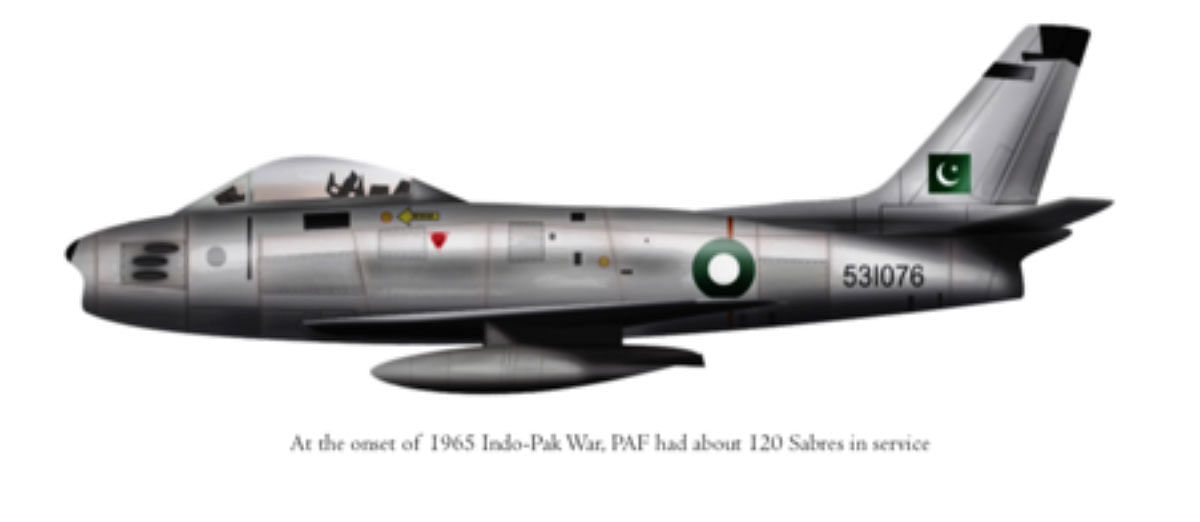
The serviceability state of PAF Sabre force was high with most of the aircraft available for combat service. Thirty of these, including the ones equipped with Sidewinder missile, were with 5, 11 and 15 Squadrons at Sargodha. Along with F104s of 9 Sqn, fourteen Sabres of 19 Sqn were at Peshawar. The 16, 17 and 18 Sqn PAF, based at Mauripur, had 36 Sabres. The 17 and 18 Sqn Sabres were re-deployed to Sargodha as part of the counter air effort against IAF bases on 6 September 1965. The remaining 12 Sabres were with 14 Sqn based at Tejgaon, near Dhaka in East Pakistan.
Like the Patton tanks of the Pakistan Army (PA), the PAF had a war-winning weapon in the form of the sleek Sabre jet armed with Sidewinder air-to-air missiles. Of course, they were overconfident about it.
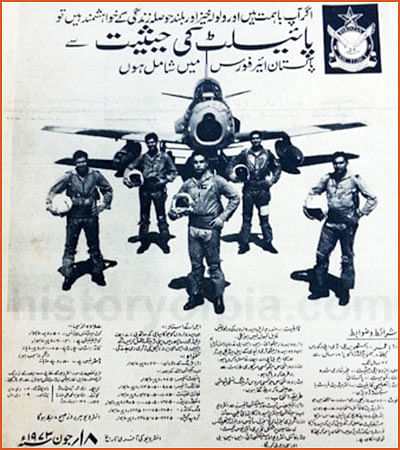
At 0400 hours on 1 September 1965, the PA launched Operation Grand Slam, a Divisional-level attack supported by two M48 Patton tank regiments on the Chhamb-Akhnoor axis in Jammu & Kashmir. The target was Akhnoor and the road link from Jammu to Rajouri and Poonch. The Indian 191 brigade was taken by surprise and was hit hard.
The PA offensive pushed the Indian Army (IA) units by its sheer weight to the banks of the Munnawar Tawiriver, where a squadron of AMX 13 tanks of 20 Lancers and elements of 3rd Mahar Regiment held the PA Pattons for a while. The IA anxiously requested the IAF for support to counter the desperate situation.
The Indian Cabinet approved it at 1630 hours. The nearest IAF base at Pathankot had Mystère IV and Vampire aircraft and all assets were primed for the strike. The Vampire was a WWII vintage, first generation jet fighter which had reached the end of its operational life. Owing to the precarious situation, the Vampire squadron commander decided to launch his near-obsolete aircraft in spite of the presence of PAF fighter CAP, as reported by intelligence over Chhamb. Within an hour of the attack sanctioned by the Raksha Mantri (defence minister), IAF launched 12 sorties of Vampires of 45 and 220 Squadrons, followed by 16 sorties of Mystères of 3 and 31 Squadrons.
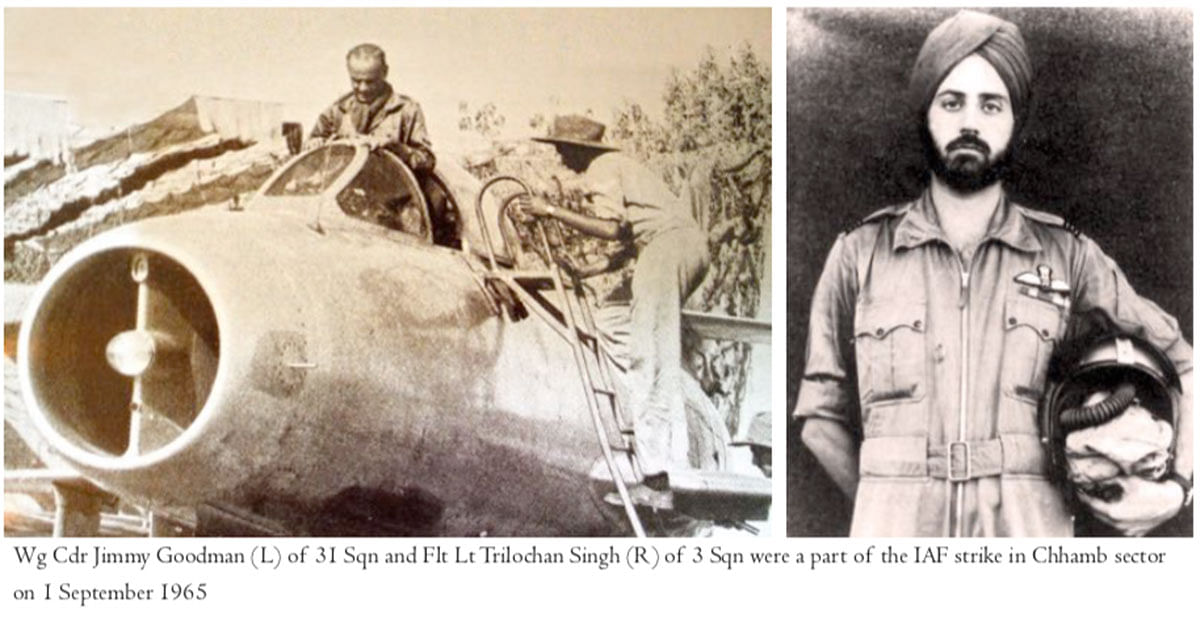
The first wave of Vampires struck Pakistan’s armoured and soft skinned elements with the approaching dusk and created panic in the ranks of the Pakistanis. The Pakistan 12 Division Commander urgently radioed for air support and a flight of two Sabres was dispatched from its CAP area to Chhamb. PAF upped the ante of the confrontation by crossing the International Boundary (IB) to enter Indian airspace. These Sabres from PAF’s 5 and 15 Squadrons arrived to intercept the second formation of IAF Vampires.
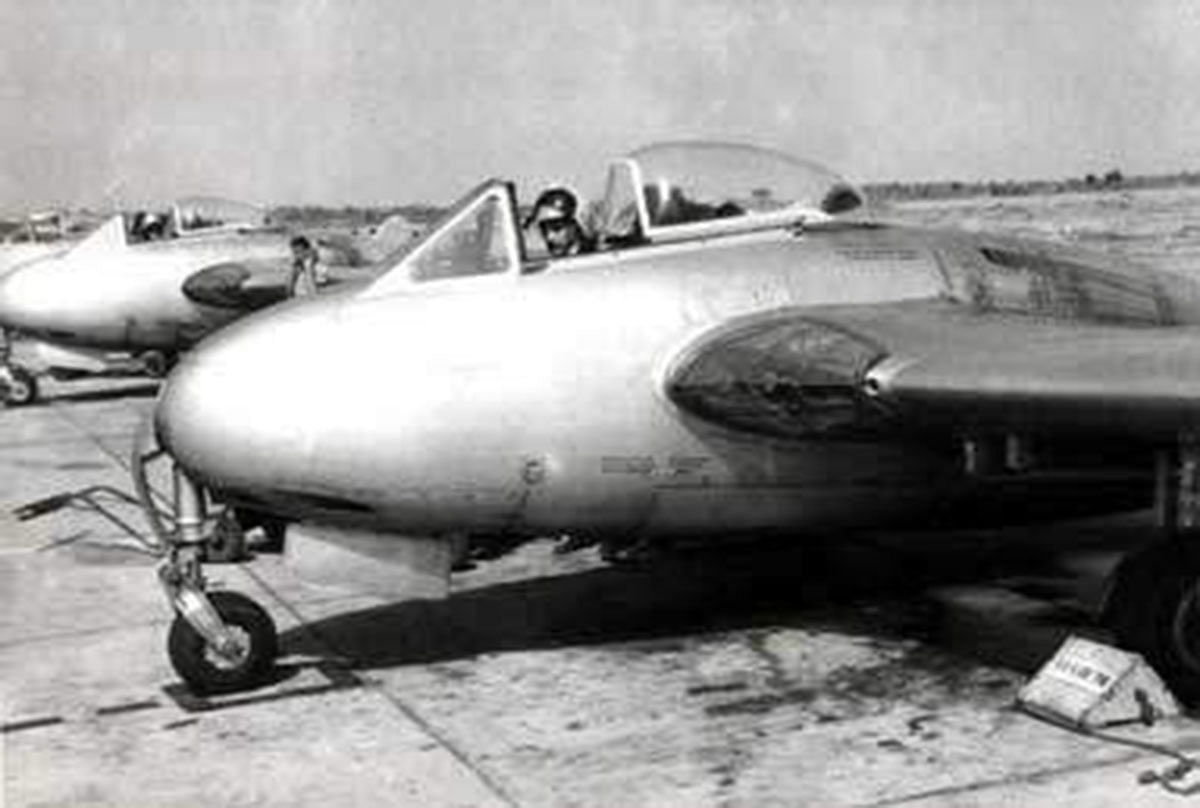
Both sides made contact with each other. Though outclassed, both in terms of technology and performance in a display of bravado and gutsy manoeuvring, the Vampires turned to engage the Sabres. The Sabres used their superior agility, performance and firepower to get the better of the Vampires and unsurprisingly shot down three of the archaic IAF jets. Though one Vampire got behind a Sabre, it could not convert it into a kill and the IAF fighter pilots paid the price for their resolute gallantry.
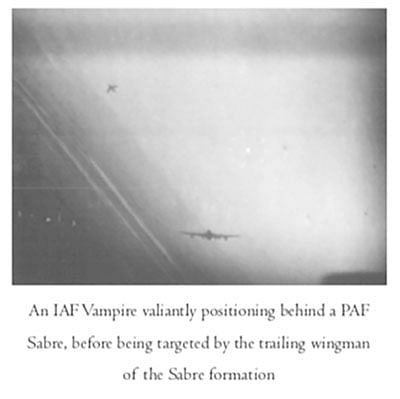
Meanwhile, the follow on Mystère formations effectively carried out their ground strikes without being intercepted. The IAF eliminated 13 tanks, two guns and 62 other vehicles of the PA. Even though Chhamb was lost to the enemy that fateful day, the IAF strikes and the tenacious mobile defence by the PA’s AMX-13 tanks in blunting the PA’s 11 Cavalry/ 13 Lancers Pattons and M36s ensured that the PA offensive was delayed decisively.
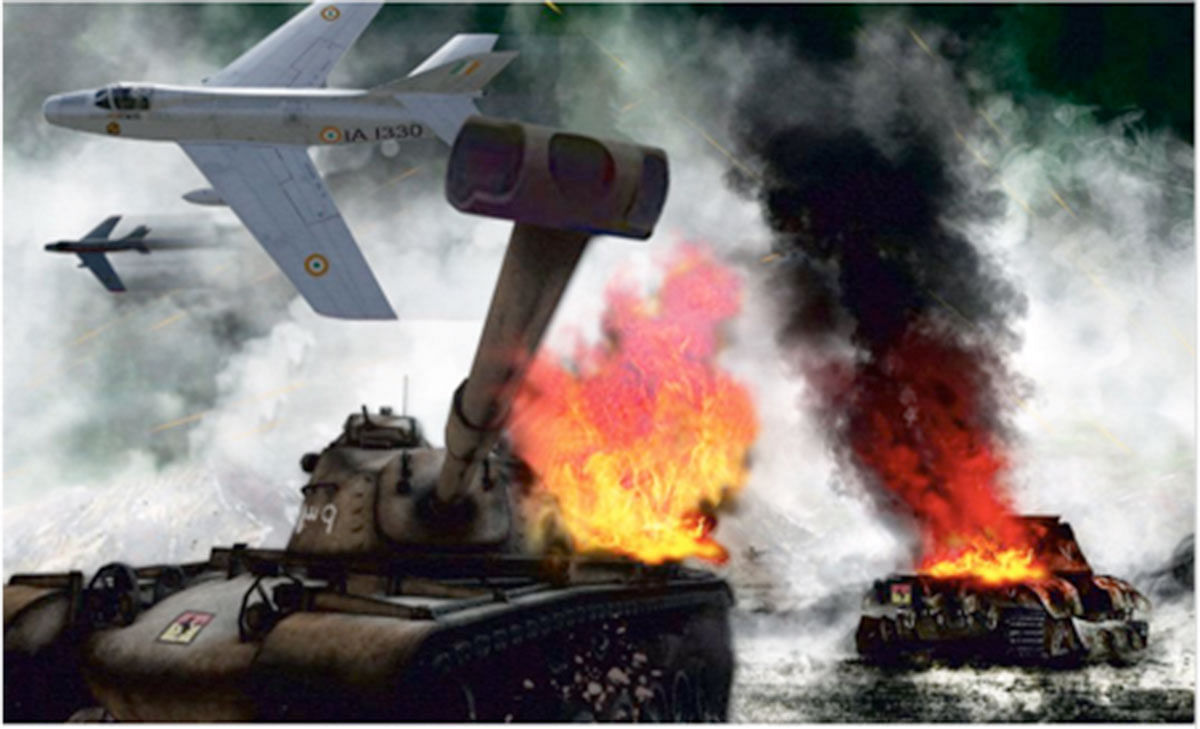
With the momentum of its armoured elements lost, it trickled down to being a cautionary probing advance across the Munnawar Tawi river. This provided the Indian troops a much-needed breather and the top brass was able to push in vital reinforcements by the next day to reinforce defences around Jaurian.
However, the loss of three Vampires made the IAF rethink its deployment of obsolete Vampire and Toofani close air support aircraft. These aircraft were redeployed to operations in low enemy threat areas for the rest of the war. Pakistan’s propaganda clamoured vociferously about the material and psychological superiority of the Sabre jets over IAF fighters, and started a worldwide PR campaign to ridicule the IAF.
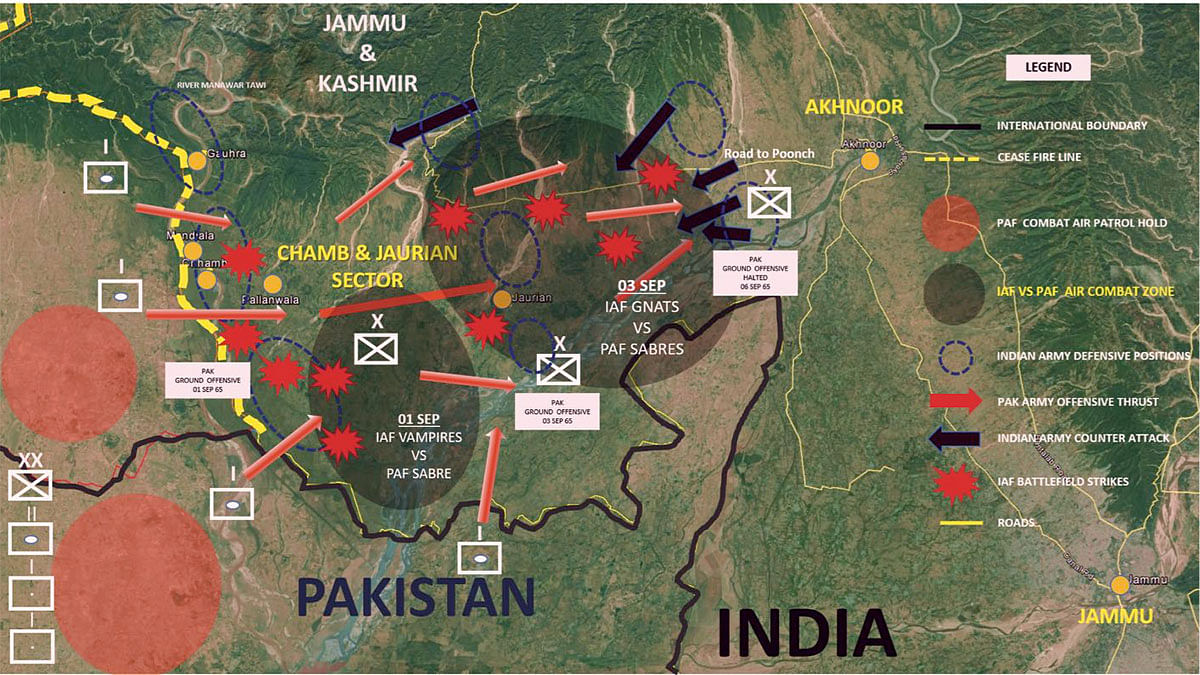
IAF’s Chief of Air Staff (CAS), Air Marshal Arjan Singh, took this challenge head on and decided to bust the myth of the Sabre’s invincibility once and for all. He dispatched an elite task force to Pathankot to take on and eliminate the Sabre threat in a suitable manner.
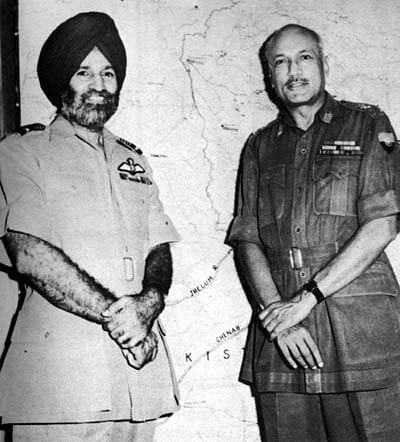
At the tip of this initiative were Folland Gnats of 23 Squadron ‘The Panthers’, which were to be deployed at Pathankot on 2 September, to provide air defence cover to IAF assets over the Chhamb–Jaurian battlefield. The Gnat was a lightweight fighter with a small profile, which was very difficult to spot during combat. It was powered by the Bristol Orpheus engine, which being lightweight gave the Gnat a speed advantage over the Sabre at medium and high altitudes. The Sabre however, was a better performer at low altitudes. The Gnat was armed with 2×30 mm cannons, which could bring down any aircraft in PAF service with just a few HE hits. At the same time, the Gnat was very sensitive to fly and required the pilot to be ahead of the aircraft and handle it with considerable skill.
On account of its supposedly small characteristics, the PAF had literally discounted the Gnat as a threat and considered the Hawker Hunter in IAF service as its main adversary. They were in for a rude shock.
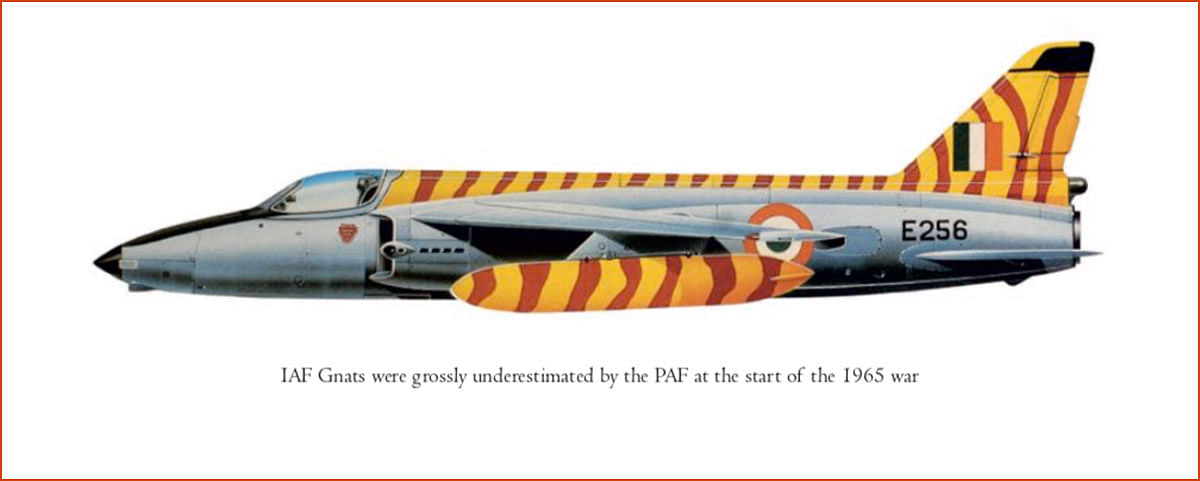
The core of the specialist 23 Squadron detachment was made of pilots with good air combat training of varied nature, and was commanded by Squadron Leader Johnny Greene, a seasoned and no-nonsense fighter pilot. The 23 Squadron Gnats landed in Pathankot at dusk on 2 September, undetected by PAF radars. Greene and his pilots were briefed on the grim situation in Chhamb and the recent IAF losses. In the end, the brief from the base commander was straightforward: “We want you to shoot down the Sabres. How you do it is your problem, but the Sabres will have to be tackled and Pakistan denied a chance to build up the Sabre’s myth.”
In the dimly lit crew room tent of the 23 Sqn detachment, Greene hatched his feisty plan to trap the PAF Sabres. “The enemy will have to be drawn outside his lair in a measured manner and then we will cut him to pieces,” Johnny Greene’s eyes twinkled as he finished describing the complete plan.
IAF Air Defence pilots would be taking Sabre pilots of the PAF head-on. IAF’s first dedicated ‘Sabre Slayer’ mission would be flown the very next day. The day of reckoning had arrived.
Pathankot-Akhnoor-Chhamb axis. 0710 hours, 3 September
It was indeed a cheeky plan. Four IAF Mystères were flying as ‘bait’ at 5000 feet to draw out the Sabre CAP near Chhamb. They were trailed by two, four-aircraft formations of 23 Squadron Gnats flying shotgun at 300 feet above ground level (AGL), far below the prying eyes of PAF’s Sakesar radar.
The first formation was led by Johnny Greene and had Flight Lieutenant ‘Manna’ Murdeshwar as his wingman. The other section leader of Greene’s formation consisted of Squadron Leader B.S. Sikand with Flight Lieutenant ‘Pat’ Pathania as his wingman. Trailing Green’s formation by about 2000 yards at 100 feet was the second four-aircraft Gnat formation led by Squadron Leader Trevor Keelor, with Flight Lieutenant ‘Kichha’ Krishnaswamy as his wingman. Keelor’s subsection consisted of Squadron Leader A.S. Sandhu, with Flying Officer P.S. Gill as his No. 2.
Watching over the Mystères was Wing Commander Krishan Dandapani, the ‘calm voice of hope’ of 230 SU, the IAF’s Amritsar radar, codenamed ‘Fish Oil’ by the PAF. He was to warn the IAF pilots of any PAF threat vectoring towards the ‘bait’ Mystère aircraft. This heavy-duty Gnat formation, like the famed Luftwaffe experten killer groups of WWII, was ready to take on anything that PAF was capable of throwing across.
However, the question was, would the PAF oblige and be willing to take the bait? At Amritsar, Dandapani was getting restless as his sharp and experienced eyes tried to distinguish aircraft blips from the raw clutter of the P 35 radar scope. He first detected the fast moving Starfighter heading for Chhamb on a steady track towards the friendly blips. Maybe, there were two Starfighters? At that point, he was not sure of a second blip.
A while later, the four-aircraft Sabre formation was clearly reflected on his scope at 30,000 feet, also accelerating towards Chhamb. He reconfirmed the headings of the PAF contacts and with a satiated nod, started nonchalantly transmitting the PAF position to the IAF aircraft, his voice holding steady and not displaying the impending excitement building up in his stomach.
Mirpur-Chhamb axis, Pakistan Occupied Kashmir. 0725 hours, 3 September
Radar contact with two bogeys at 5,000 feet in battle formation approaching Akhnur. Gentlemen, the IAF is bang on time for its morning cup of tea over Chhamb–Jaurian. ‘Theatre’ clears you for the interception. Steer course zero niner five for intercept. Go, get them boys.’
The call from ‘Babur’, the PAF’s high performance Sakesar radar and the Sector Operations Centre (SOC) boomed loud and clear in the ears of the mission commander leading Sabres of No. 11 Squadron, Pakistan Air Force (PAF) on combat air patrol (CAP) across the International Boundary near Chhamb. The Sabres were flying at an altitude of 30,000 feet.
“Delta leader accelerating max on zero niner five,” informed the mission leader on his radio as he opened max throttle. Within seconds, four Sabres were skyrocketing towards Jaurian town, on the outskirts of which a fierce battle waged for the Troti heights. There the Pakistani Patton tanks were engaging dug in IA defenders with impunity. The PAF CAP providing air defence for the sector comprised of four Sabres and one Starfighter jet on station. Flying Officer Abbas Mirza, flying in the lone 9 Squadron F104 Starfighter at 35,000 feet, also monitored the call from ‘Babur’ and turned hard towards the target area as his aircraft accelerated past the sound barrier.
Another Starfighter was on Operational Readiness Platform (ORP) at Sargodha AFB in support of the CAP, and was already rolling for a take-off towards the ‘hot zone’ as the PAF colossi headed for the Indian Air Force (IAF) jets being painted on the Sakesar radar. The PAF pilots, with years of tactical training on American equipment, had a deep sense of conviction in the superlative performance of their flying machines. They expected a turkey shoot in the coming minutes.
The die was cast for what would become the first engagement of IAF and PAF fighter jets with comparable performance.
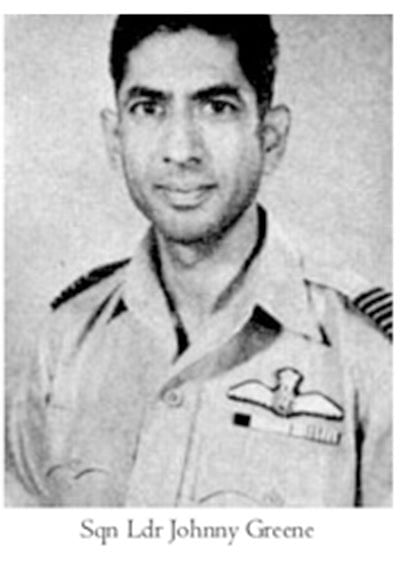
Chhamb—Akhnoor axis. 0727 hours, 3 September
As per plan, the IAF formation turned left from Akhnoor Bridge and turned towards Chhamb. Dandapani, at this point, seeing the PAF aircraft closing in near enough, told the Mysteres to break right and extricate from the battle zone. The Mystere pilots went full throttle, turned right and exited the combat zone, diving amongst the hills for a clean getaway.
The PAF Sabres had taken the bait.
As the Mysteres hit the deck in a right turn back for base, it was time for the Gnats to announce themselves to the enemy. Johnny Greene pitched up sharply to initiate climb with his formation. This was the only place where the Gnats were vulnerable to the Sabres. Straining their eye sockets to spot the Sabres, the IAF pilots aimed to reach an aggressive height of 30,000 feet in less than ninety seconds. They climbed steeply in a starboard turn to higher altitude, countering any threat from the port. As Greene’s nimble Gnats in their finger four formation zoomed up, Keelor and the pilots of the second formation eased up behind them, maintaining to the left of the formation, covering Greene’s flank.
What happened next is history.
“Johnny, Contact single bogey slotting in behind at 4 o’clock to your formation at 1500 yards — break hard right,” Keelor’s executive call was demanding and clear in its actions, as he made visual contact with the Sabre flown by Flt Lt Yousaf Khan, who was trying to descend behind Murdeshwar in Greene’s formation. Pathania also made contact with the threatening Sabre behind Murdeshwar. Greene’s formation members carried out a hard right defensive break into the attacker’s reported position, aiming to spoil the attack of the Sabre and throw him off guard.
At this stage, Sikand carried out a turn in the opposite side. He had made contact with Khaliq, who while overshooting Yousaf, presented a clear threat to the formation on the outside of his turn at 8 to 9 o’clock. In his hard break to the left, Sikand lost contact with the combat, which was rapidly moving to his right and towards higher levels in a different plane. In that brief moment to orient himself, he also lost sight of the other PAF Sabre in poor visibility conditions and was effectively on his own, out of combat.
Some distance away, in the hot melee of fighter planes from India and Pakistan, Yousaf struggled to persist behind Murdeshwar in a further attempt to get a lock on his missile. Keelor recognised this danger correctly, relaxed his turn and deployed airbrakes to maintain behind Yousaf.
It was ironic. ‘The hunter was about to be hunted’, just the way Johnny Greene had briefed them the previous evening.
Keelor fired his maiden burst from the Gnat’s guns and hit bull’s eye, as the Sabre’s right wing and elevator spewed off metal parts and smoke. Keeping his nerves under order, a calm and composed Keelor continued closing into the Sabre and fired his penultimate burst at 200 yards. Mortally hit, the right wing of the Sabre ripped off and the aircraft headed in a spiral towards mother earth.
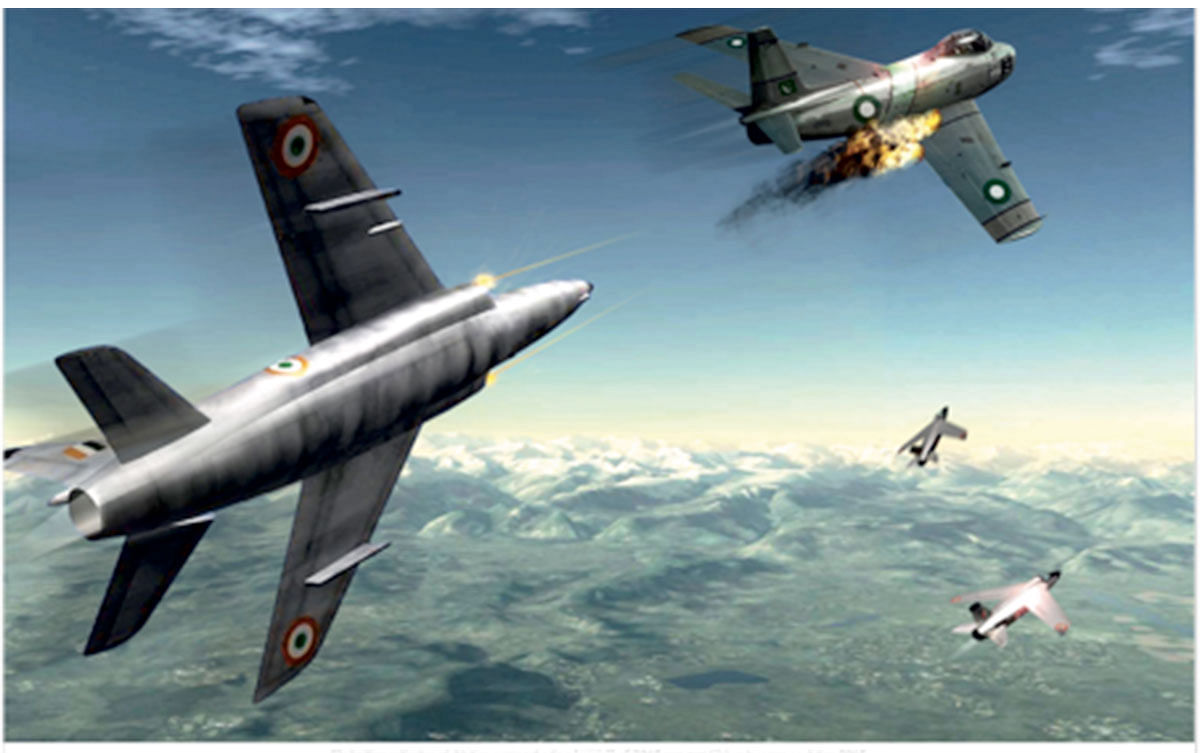
IAF had scored its first jet-to-jet air combat victory. This was also the second kill by an Indian pilot since WWII. It was the first Gnat kill in the world. What was exceptional about this kill was that the Sabre was armed with Sidewinder air-air missiles. To score against a missile armed aircraft by guns only, always rated at the top of the air combat gratification charts. Keelor had joined an elite club of airmen who had accomplished this feat.
After shooting down Yousaf, Keelor broke right and in deteriorating visibility made contact with Krishnaswamy, who was headed towards another combat conundrum taking place at their right 3 o’clock. Pathania, in Greene’s formation, had spotted the other section of Sabres dropping on the Gnats from 3,000 feet above.
To neutralise the advantage of the PAF Sabres, Pathania rolled hard, gave the lead Sabre an inverted head on cross and reversed left closing in to the Sabre’s wingman who was trailing his leader. Pathania went to full power and kicked his rudders to rapidly point his Gnat ahead of the Sabre for a deflection shot. Halfway through his audacious manoeuvre, he spotted tracers flying past his Gnat. He looked sharply to his right to spot the sleek frontal profile of an F104 Starfighter heading for him at high speeds, dropping from higher quarters.
A stunned Pathania broke away from the hail of bullets and reversed to spot a Gnat trying to get behind the Starfighter. “Damn,” he muttered under his breath and pitched up sharply, as the Starfighter whizzed past his Gnat in a seemingly Hail Mary pass. “Contact with single Starfighter. The PAF has thrown everything they have at us. Watch out!” Pathania urgently informed all on the radio, stuck at an eighty-degree pitch of a perilous knife-edge.
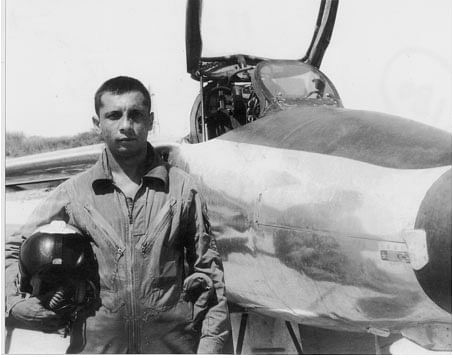
While Keelor was dispatching Yousaf’s Sabre, Sakesar control urgently vectored two Starfighters towards Chhamb. Abbas Mirza’s F104 Starfighter arrived over the combat zone first. He spotted Greene’s formation breaking right to engage the second section of Sabres, who were dropping onto the Gnats. Abbas saw those Sabres in a vulnerable position as one pair of Gnats was getting into a firing position. At this stage, he decided to intervene and nose-dived from 25,000 feet towards the free-for-all air combat situation, firing blindly with his powerful 20mm Vulcan Gatling gun, not sure of what would happen next.
Mirza arrived in combat as the joker of the pack.
“Delta Two, Indian Gnats are getting behind you. All aircraft, extricate straight ahead. I will distract them,” his panic call to the other Sabres was snappish, as the second section of two Sabres obediently exited the combat zone by diving and accelerating towards Pakistan. Abbas had saved the PAF Sabres from harm’s way by his timely intervention. He, however, with his junky tactic, had crossed Mach 1 and could not get a weapon solution on any of the Gnats.
Nonetheless, his high speed did save him from a menacing Krishnaswamy, who was cutting air space corners to close into him. It was Krishnaswamy’s Gnat that Pathania had seen trying to position behind the Starfighter. Krishnaswamy fired a burst in a futile attempt to target the Starfighter, which was moving very fast, missing the Starfighter. Abbas realised that he had a large number of angry IAF Gnats engaging him. He prudently decided to maintain maximum speed to disengage from combat and head back to base. Pathania, who had recovered well and was threatening the Starfighter from an inside drop, watched in awe as the Starfighter’s afterburner lit up and it accelerated safely away like a rocket.
Abbas’s desperate action had saved the second Sabre pair from getting shot down on that momentous day. “We part to meet again,” Pathania signed off in a mock salute to a worthy PAF fighter pilot.
Greene and Keelor scanned the skies for a second Starfighter as reported by Dandapani during the course of combat. On spotting no threat, and with low fuel in the formation, the formation leaders gathered their flock to head back home.
In a span of less than a couple of minutes, the IAF Gnats had tangled with the best the PAF could throw at them and emerged victorious. They had shot down one Sabre and came close to trapping another two, but for the timely intervention of a Starfighter who shooed the Sabres away from certain catastrophe. The Starfighter itself was vulnerable to a great extent and only avoided getting shot down due to a dramatic high-speed exit from the battlefield.
Dandapani, who in the secure operations room of Amritsar Radar had witnessed this classic ‘bait the enemy’ mission on the radar while monitoring the combat banter on radio, was sweating profusely and fast approaching a tipping point with his stretched out nerves. He had feared the worst when he had seen the blips merge on his radarscope. The untested Gnat against battle-hardened Sabres and Starfighters was always going to be a tricky combat match. As Greene radioed back the situation report, Dandapani jumped up with glee from his controller’s seat, waved at the friendly radar blips and whistled out aloud, “Yes. Those blighters have done it!” The Airmen around him, having witnessed various shades of emotions on his face during this dramatic engagement, stood up and cheered him on.
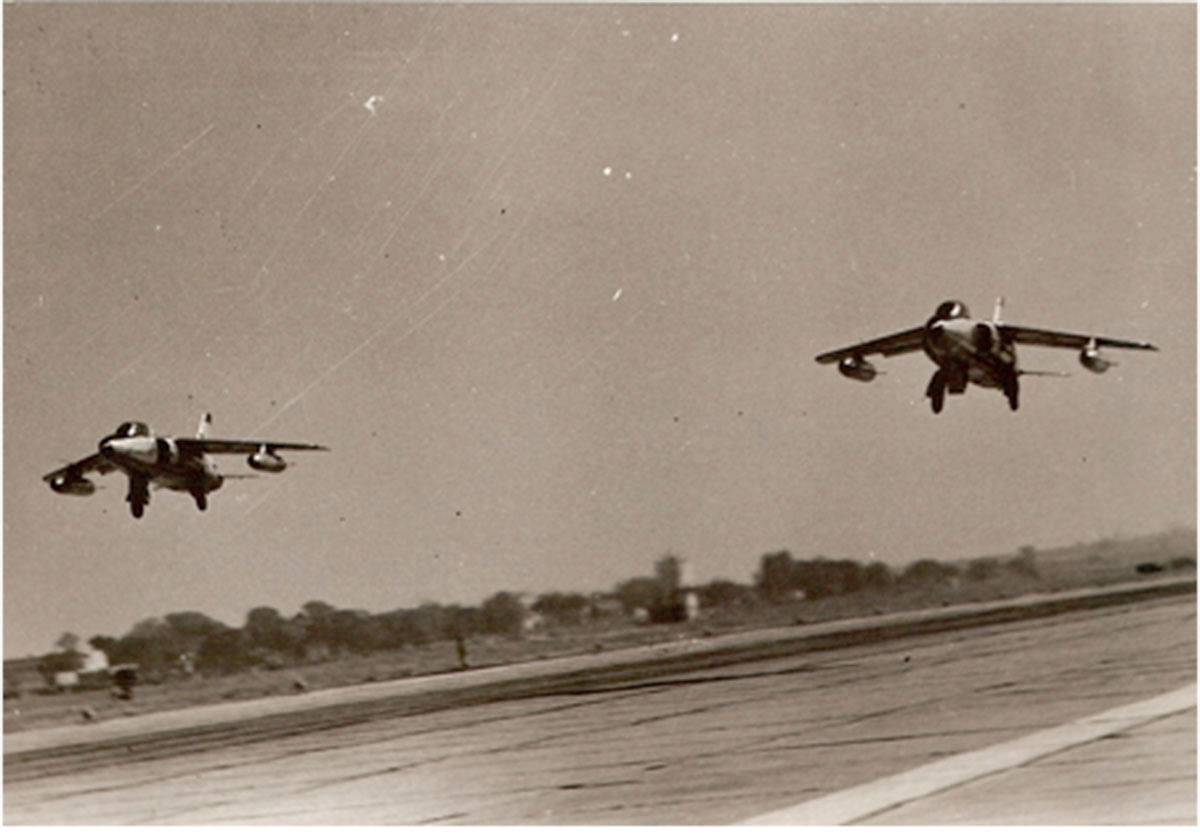
The birth of ‘Sabre Slayer’
Johnny Greene and the 23 Sqn Gnat pilots had done what had been mandated to them by the CAS, Arjan Singh.
As the Gnats touched down back at Pathankot, the station commander rushed to meet them and hear the story of the vanquishers. He was debriefed extensively on the encounter and he quickly informed the CAS of the events over the landline. A delighted Arjan Singh is rumoured to have famously told the defence minister post the encounter, “Sir, please tell the Indian nation, on this day a Sabre Slayer is born!” Thus was born the appellation “Sabre Slayer” for the potent Gnat, which had taken part in the first air combat of its operational career and come out victorious in the face of a gritty enemy attack.
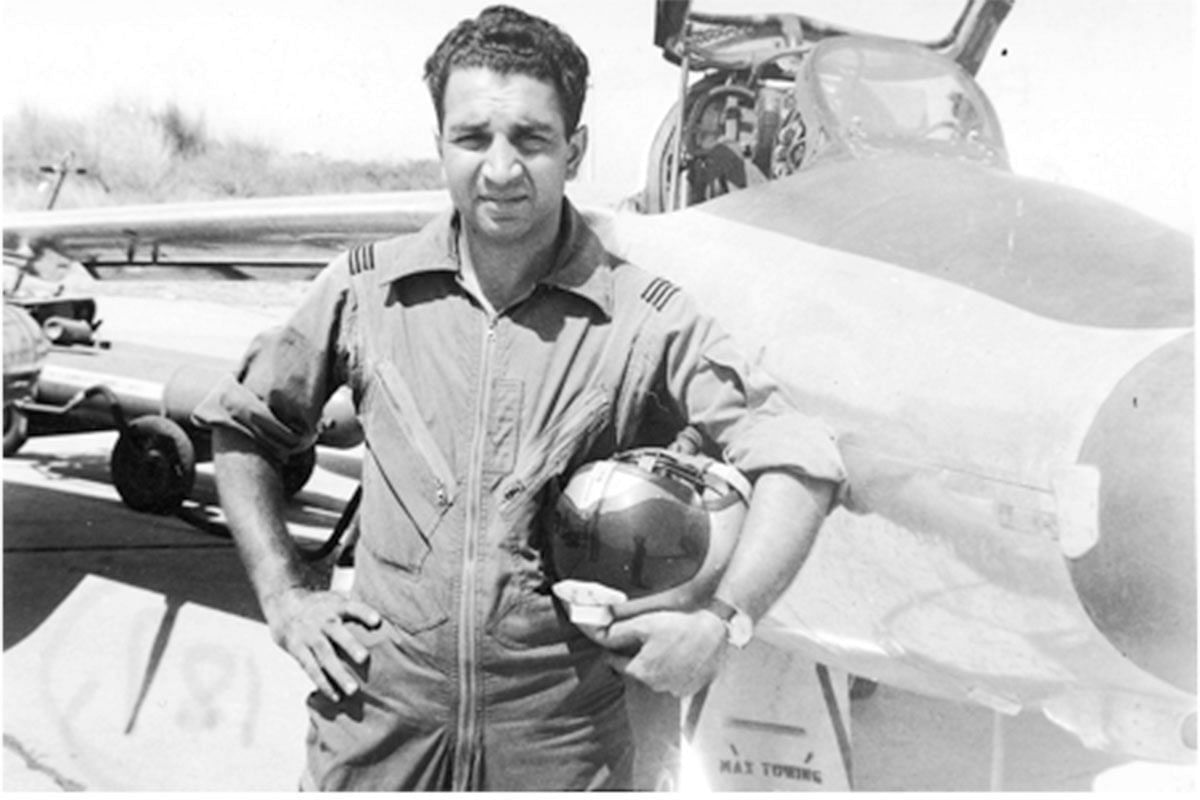
The 23 Sqn was to achieve more victories against the PAF in the coming days of the 1965 war. Under the command of their CO Wg Cdr S. Raghavendra, it emerged as the top IAF Air Defence Squadron of the 1965 war. There was a friendly casualty that day, however, where Sikand — who had a complete electrical failure on his Gnat while he got separated from the fight — had to make an emergency landing at the PAF field at Pasrur. He spent the rest of the war in a Prisoner of War (POW) camp.
Meanwhile ‘Pat’ Pathania, who missed shooting down a Sabre on 3 September, got a Sabre kill the next day near the Akhnur bridge. ‘Kala’ Sandhu, the talented ‘flying sikh’ of the outfit, got a Sabre kill on 18 September. The Gnats’ gun stoppage issue marred the Sqn pilots to no end, as many missed shooting down more PAF aircraft due to this problem in the coming days. The Gnats dominated the battlefield over Chhamb and other battle zones until the end of the war and the mettle and superiority of IAF Gnat pilots became the talk of the town in fighter pilot hangouts all across the world.
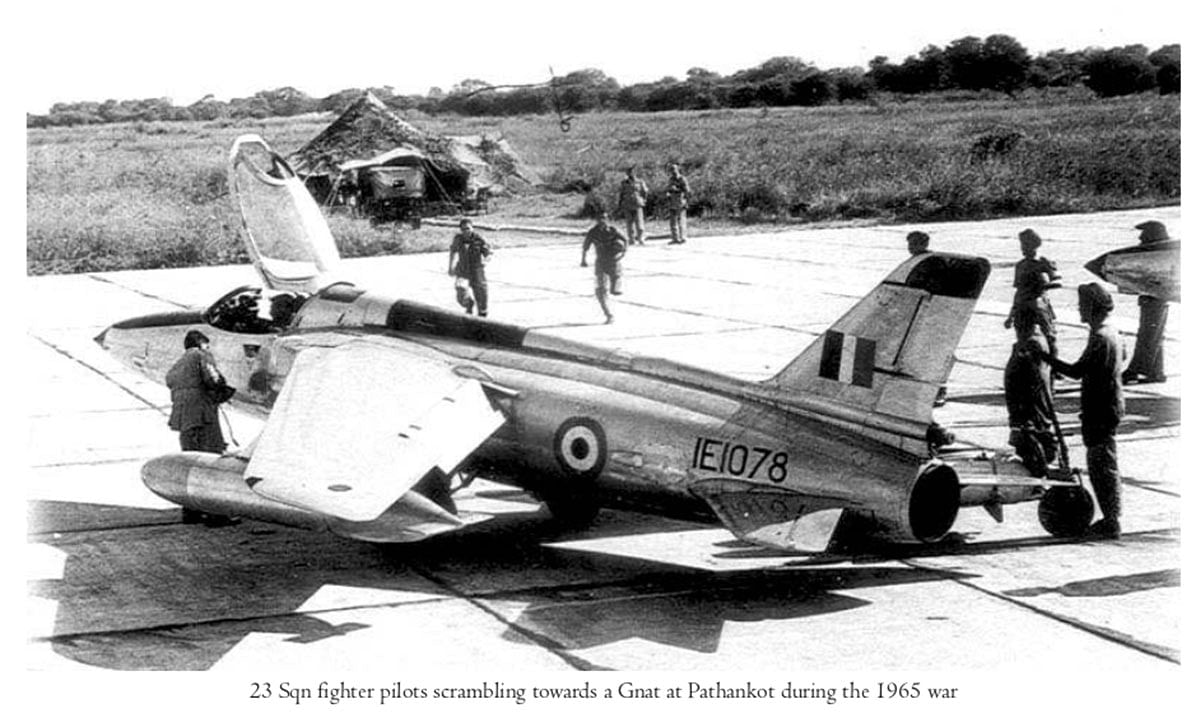
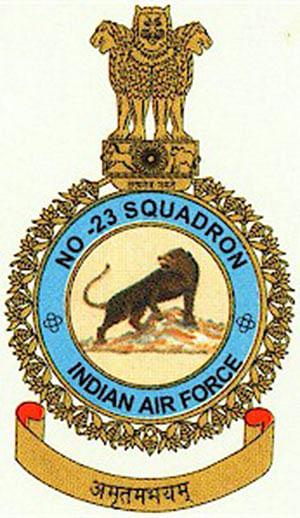
The PAF intelligence belatedly rushed to upgrade the status of the Gnat to ‘most dangerous’. It is well known that post the Chhamb dogfights, PAF pilots avoided the nimble Gnat to a great extent. Greene, Keelor, Pathania and Sandhu were awarded the coveted Vir Chakra each for their daredevilry over the battlefields of the 1965 war. Dandapani, the CO of 230 SU, was also awarded an AVSM after the war. Their kills helped bust the Sabre’s invincibility myth.
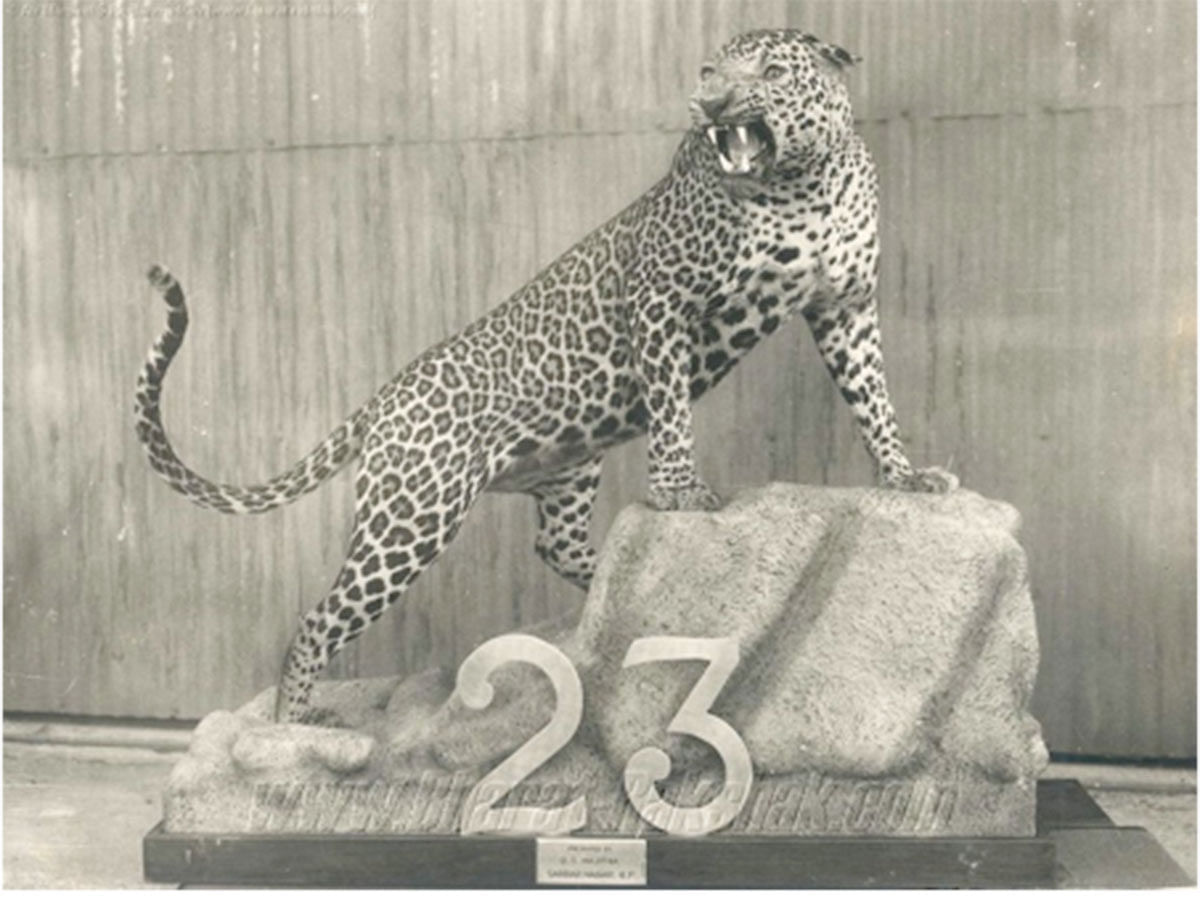
The ground war
Operation Grand Slam ground to a halt short of Akhnur by 5 September 1965 with a tenacious defence by the PA (IA). The IA’s effort was ably supported by the IAF strikers who pounded the PA in a timely manner. The PA lost the initiative in Chhamb when the IA decided to cross the International Boundary (IB) near Lahore to take the war right to Pakistan’s doorstep in the coming days.
Early on 6 September 1965, the IA’s 4th, 7th and 15th Divisions launched Operation Riddle by crossing the IB east of Lahore. They made significant progress and captured the towns of Dograi and Barki in the coming days. Their attack shook the foundation of the PA, which as foreseen, urgently diverted forces to plug the gap near Lahore. This was the nail in the coffin for PA’s Operation Grand Slam in Akhnur.
IA’s Operation Riddle, targeting Lahore and Kasur, created panic in the ranks of the PA. As expected by India, Pakistan rushed to stop the Indian onslaught and pumped in reinforcements from other sectors including Chhamb, where the PA offensive was already waning. Among other measures to counter India, Pakistan premier Ayub Khan ordered the Pak CAS, Air Marshal Nur Khan, to target and eliminate the IAF offensive capability so that it would not be able to support the IA on the Lahore front. Nur Khan came to the conclusion that PAF had to act fast and take ascendancy over IAF before the IAF targeted PAF airfields in a dedicated counter air effort. He set in motion PAF’s Warplan no. 6, which called for pre-emptive strikes against the frontline IAF bases of Pathankot, Halwara, Adampur, Jamnagar, as well as the IAF radars at Amritsar, Ferozpur and Porbandar.
Nur Khan anointed the evening of 6 September for these coordinated strikes to destroy the IAF’s core air defence and striking power.
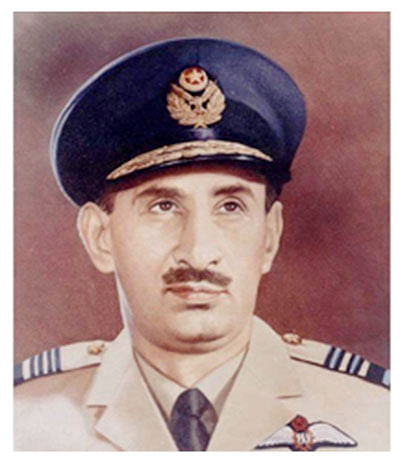
PAF Fighter Base — Sargodha. Pakistan. 1650 hours PST, 6 September
Pakistan Air Force’s ‘Jaanbaaz’ formation, comprising three Sabres of No. 5 Sqn lined up in a classic pair take off formation over the runway end, their turbojets revving well between idle to taxy settings. The pilots halted at the correct take off position and urgently rushed through their pre-take of briefs.
Each Sabre was armed to the teeth with 1800 rounds of armour piercing (AP) and incendiary (I) ammunition for their deadly Browning Guns, as well as two 2.75 inch air-to-ground rocket pods. Sweating profusely in their cockpits, their hearts beating in cautious anticipation, the pilots watched the Sabres of the 11 Sqn formation, who had taken off before them disappearing under the horizon towards India. The pilots now waited anxiously for the final mission ‘Go/No go’ call from the base commander.
In command of this formation was the most well regarded PAF pilot, Sqn Ldr Sarfraz Rafiqui. It was Rafiqui, who had led the first PAF mission to shoot down IAF Vampires over Chhamb on 1 September 1965 and had been awarded two kills by the PAF during that engagement. Now Rafiqui was flying the most important mission of his life — leading the PAF strike over the IAF base of Halwara. His Time Over Target (TOT) at Halwara was to be 1700 PST and he was running late due to issues with aircraft availability at Sargodha.
“Jaanbaaz — you are a Go. You are clear for take-off,” the tense but crisp voice of Sargodha’s Base Commander, Group Captain Zafar ‘Mitty’ Masud announced emphatically on R/T.
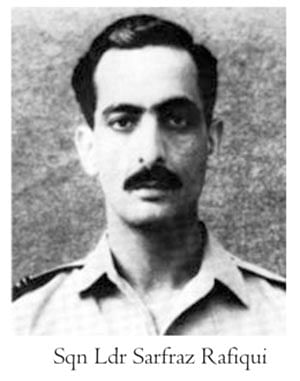
With that, as if unshackled, the three Sabres went to maximum power settings and began to roll for a take-off. Upon being airborne, Rafiqui turned the formation on course towards Halwara. Maintaining strict radio silence, the Sabres descended to low levels heading for the Indian border in the receding light towards the east. ‘It will not be easy in these poor light conditions,’ Rafiqui sighed to himself and got down to the task of navigation.
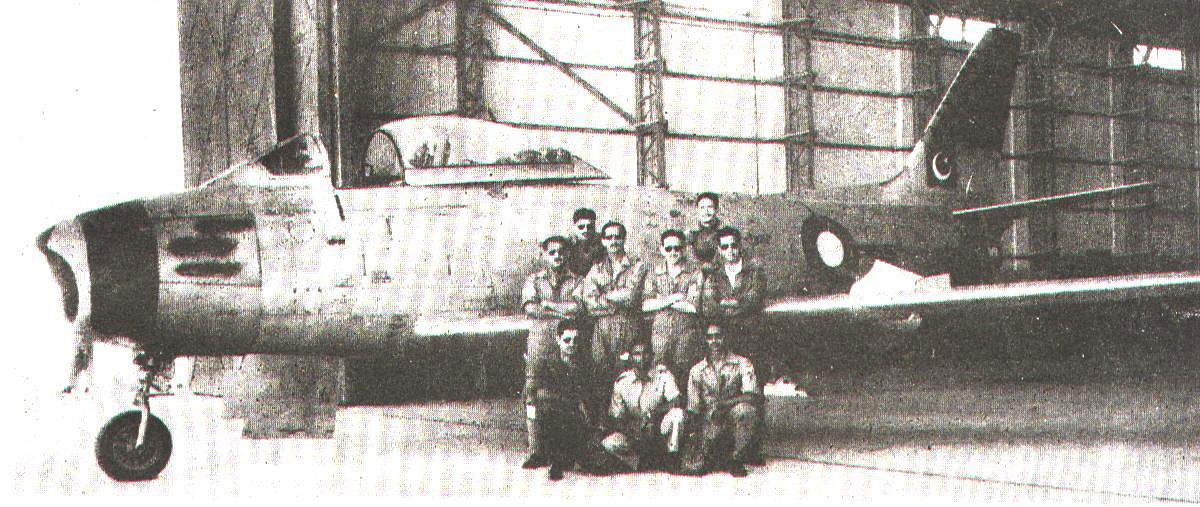
Rafiqui’s formation was not alone. Three other Sabre formations were targeting Pathankot, Adampur, Jamnagar and the IAF’s Amritsar radar in pre-emptive strikes. Two T33 formations were also airborne to locate and destroy IAF’s radars at Ferozpur and Porbandar. The PAF wanted to knock out the offensive operations capability of the IAF through these well-coordinated strikes. The IAF had no warning of the PAF strikes heading their way at 500 knots at low levels, as they were below the pick-up altitude of IAF’s Amritsar Radar.
As Rafiqui’s formation crossed the IB into India, he heard the announcement of a successful attack over Pathankot by PAF’s ‘Zambo’ formation strike leader, Sqn Ldr Sajjad ‘Nosey’ Haider. Nosey Haider was CO of 19 Sqn PAF and had earlier during the day carried out a successful strike over IA elements who had crossed into Pakistan on the Lahore-Amritsar Grand Trunk Road. This attack had caused huge material losses for the Indian 7th Infantry Division and their attack had petered down. Now, Haider had carried out a very effective attack on the Pathankot airfield as part of the PAF’s pre-emptive strike campaign.
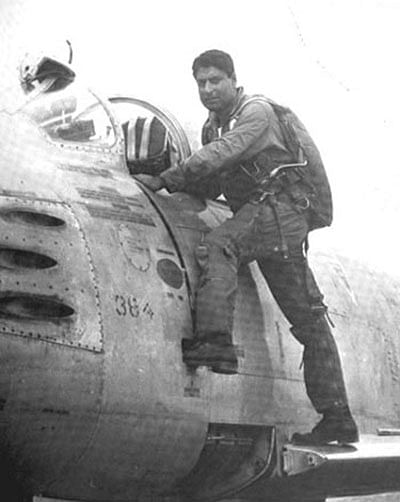
Rafiqui cheered in silence at Haider’s success and was now more than confident about pulling off his mission. Rafiqui recalled the briefing in the Operations Centre with the Station Commander at Sargodha before the flight. Zafar Masud was on line with the PAF chief. After the call, Masud told the aircrew, “Gentlemen, the Air Chief wishes you good luck for the mission.” Thereafter, he turned towards Rafiqui and looked him in the eye, “Sarfraz,” he said, “The Air Chief has asked me to convey to you that you and your boys are the tip of PAF’s sword, our Azb-e-Fizaya. The PAF cannot afford for you to fail. Godspeed and good luck!” Rafiqui grit his teeth in expectation while reminiscing this conversation inside his Sabre. He and the other mission commanders of the PAF represented the tip of the PAF’s bellicose sword, and Rafiqui was determined to do his best for Pakistan and unleash hell over Halwara.
The hunt
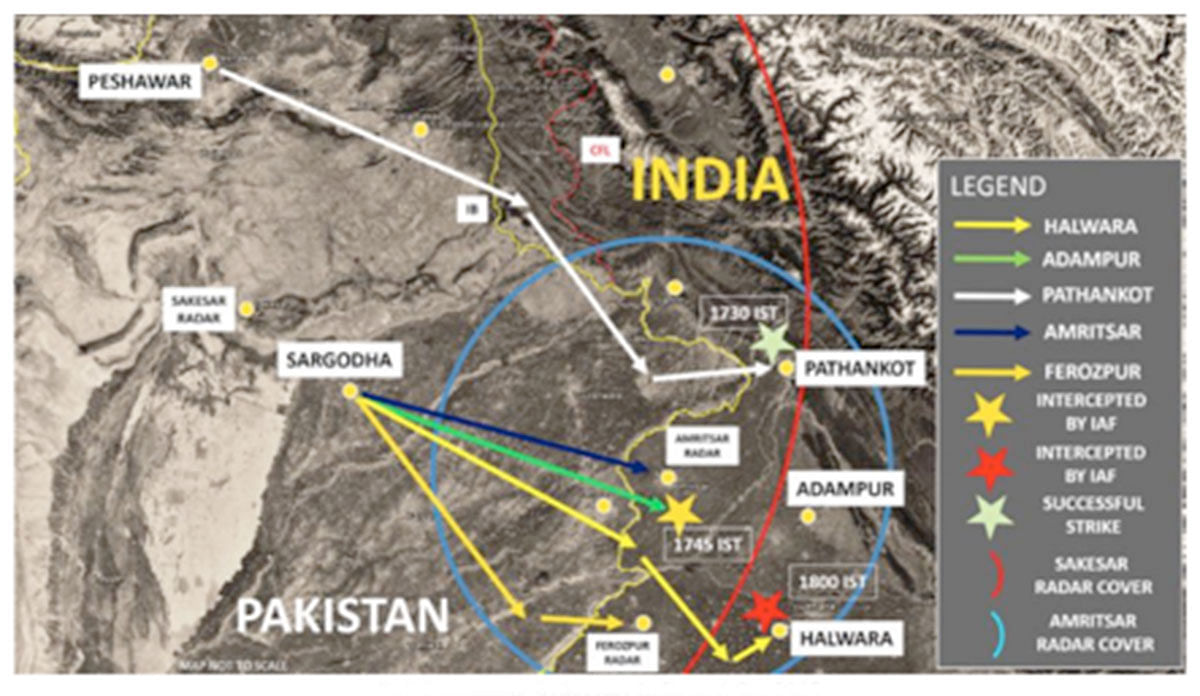
Busy carrying out ground strikes in the Lahore-Kasur area to stem the flow of reinforcement to PA’s Lahore front, the IAF was oblivious to the jingoistic designs of the PAF. It is to the credit of the PAF that the IAF got the first indication of the strikes only when Sabres of PAF’s 19 Sqn successfully attacked Pathankot airfield at around 1730 hours IST on 6 September. This strike resulted in the destruction of eight IAF aircraft on ground at Pathankot. As more Sabres hurtled towards the airfields of Adampur and Halwara to deliver their coup de grâce, the only force standing between these highly vulnerable airfields and the PAF was a staunch bunch of IAF fighter pilots of the 7 and 27 Squadrons, flying the Hawker Hunter fighter jets.
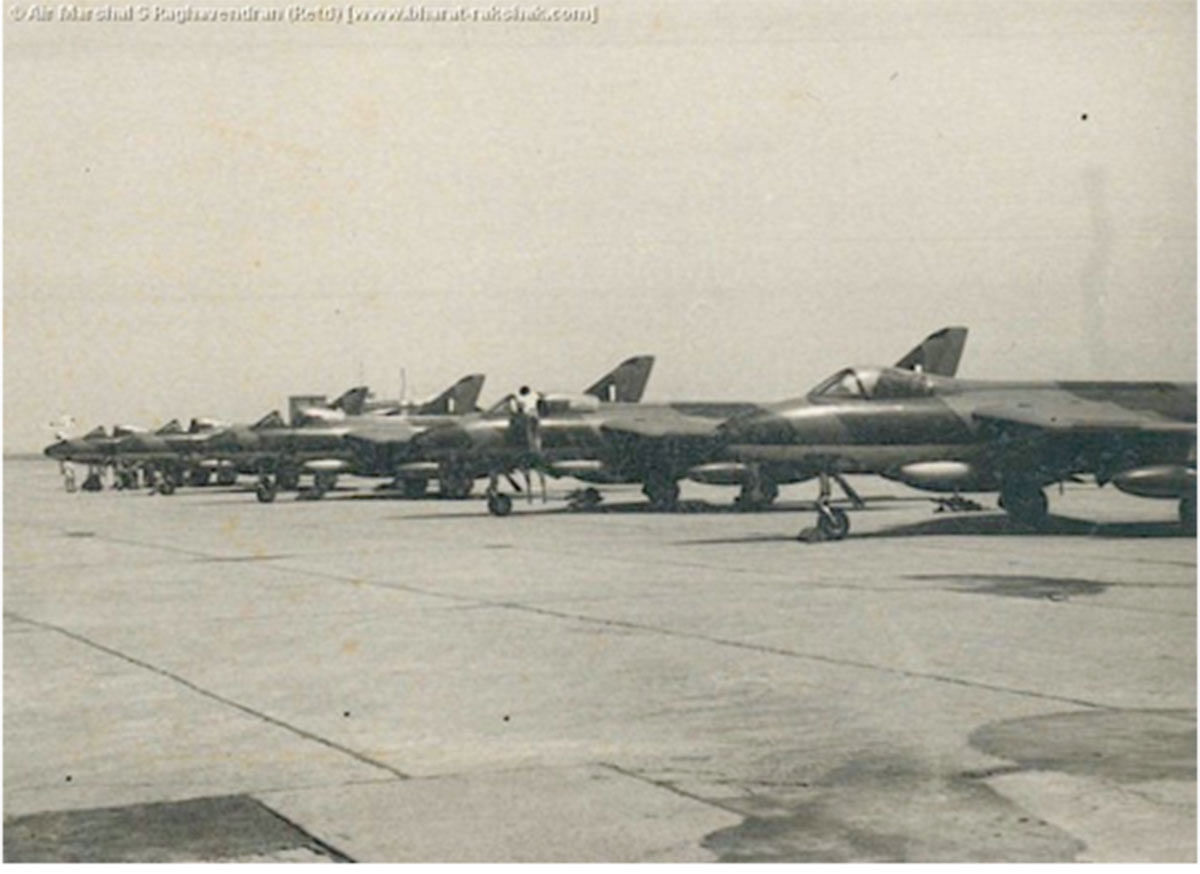
The Hawker Hunter F56 fighter was a true multirole capability jet, which was considered to be one of the best fighter designs ever made. It was a ‘pilot’s aircraft’, with very good manoeuvrability, further boosted by its Rolls Royce Avon Mk 207 turbojet. The Hunter had a maximum speed of 650 mph with a service ceiling of 51,000 feet. It was armed with four 30mm Aden cannons and 16xT 10 ground attack rockets or 500/1000 lb bombs. The 30 mm guns on the Hunters were particularly lethal with a 54-feet spread at kill ranges. With its all-round performance, the Hunter was more than a match for the PAF’s Sabres.

The PAF strike heading for Adampur, consisting of three Sabres, was intercepted by IAF Hunters of 7 Sqn’s ‘Grey’ formation led by Wg Cdr Toric Zachariah. The Hunters were on their way to undertake a strafing mission on the outskirts of Lahore. Over Tarn Taran, the Hunters confronted the Sabres of PAF’s 11 Sqn led by Sqn Ldr MM Alam, which due to reasons of poor navigation and fading visibility, were struggling to reach Adampur. The accosted Sabres jettisoned their wing tanks and engaged the Hunters. A classic air combat melee commenced at low levels, in which the Hunters forced the Sabres to abandon their strike towards Adampur and turn back towards Pakistan.
With the Hunters on their tail, Alam’s formation went to top speed whilst maintaining ultra-low levels. The Hunters gradually fell back behind the accelerating Sabres. In the absence of air-to-air missile, they could not target the PAF aircraft, which escaped successfully and landed back at Sargodha. The IAF, albeit, suffered the loss of Sqn Ldr Peter Rawley, who misjudged his turn at low levels during the engagement and went into the ground. Bizarrely, Alam claimed this kill and was awarded the same by PAF. Nonetheless, a catastrophic strike over Adampur base had been averted by the timely action of the 7 Sqn Hunters who forced the PAF Sabres to scurry back towards Pakistan.
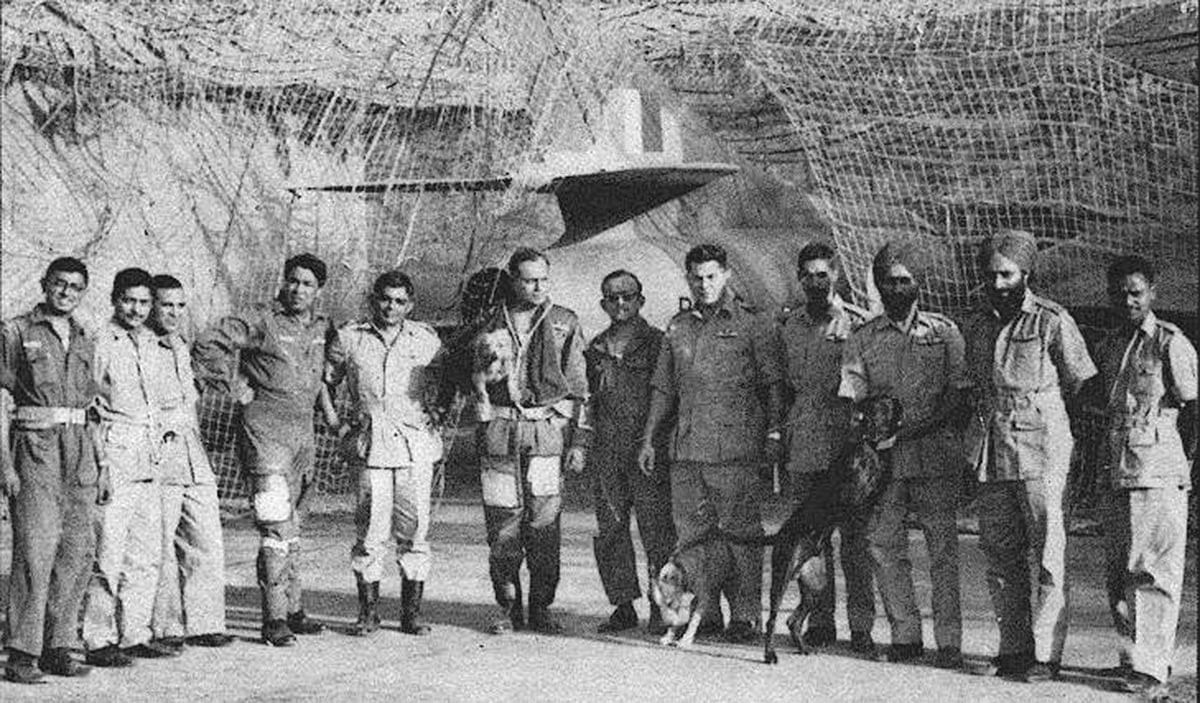
Unknown to the IAF, a PAF strike led by a very determined fighter pilot of the PAF had slipped through and was on its way towards Halwara to deliver its load of death and destruction.
North of Halwara AFB. 1748 hours IST
Flight Lieutenant D.N. Rathore and Flying Officer V.K. Neb of 27 Sqn were on Combat Air Patrol (CAP) Station just south of Ludhiana town at 10,000 feet. They had been scrambled from Halwara when the Pathankot airbase was under attack and were positioned to cater to any PAF strike over Adampur or Halwara. While Rathore was an experienced Hunter jock, Neb was still undergoing his operational training on the Hunter and had never fired the 30mm Adens on the aircraft. The precarious air situation demanded every available aircrew to do his bit. Rathore and Neb intended to do just that as they carried out a racecourse CAP pattern monitoring the ensuing combat between the IAF Hunters of 7 Sqn with Alam’s Sabres at Tarn Taran on the interception radio channel. Like every fighter pilot in the air, Rathore wanted a crack at the best of the PAF and he cursed his luck for being at the wrong place at the wrong time.
He did not have an inkling then, but within minutes, Neb and he would be sucked into the most intense dogfight of their careers.
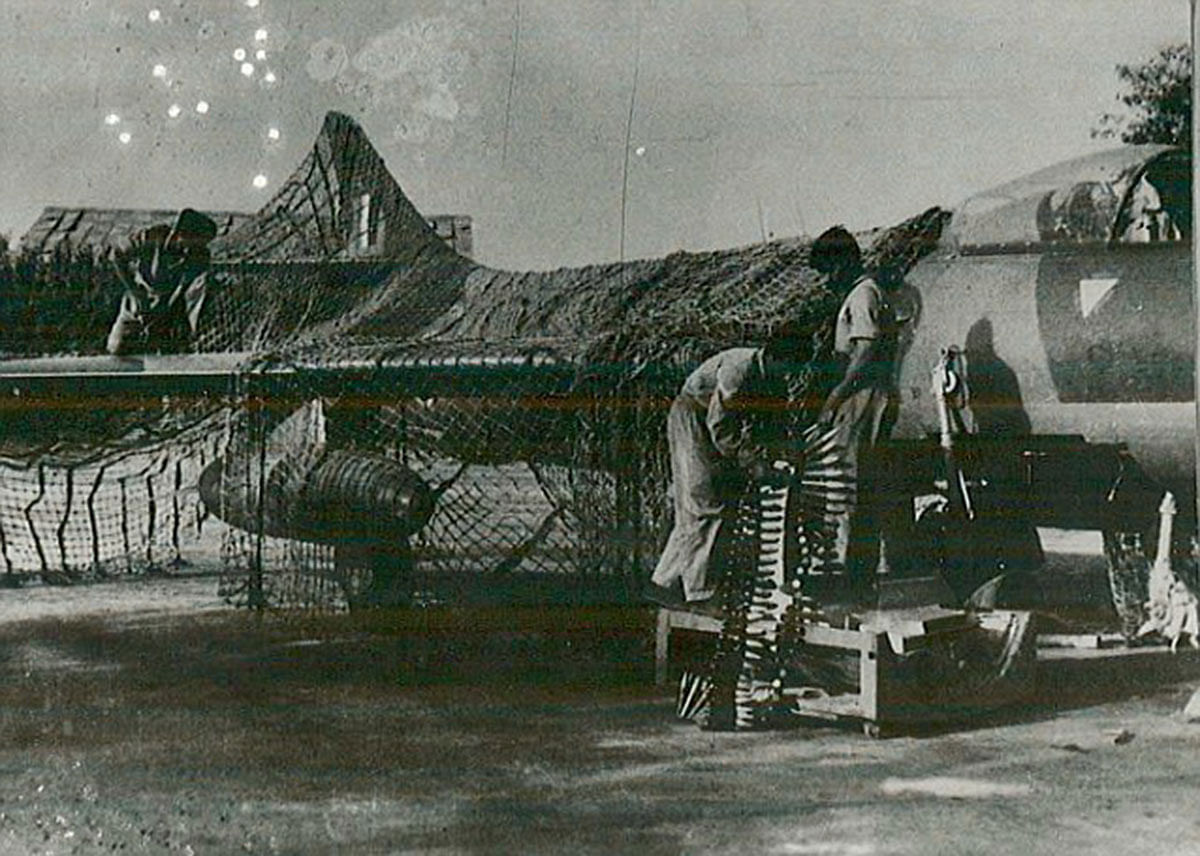
Halwara airfield. 1800 hours IST
Rafiqui had been warned by Alam on R/T of the lurking IAF Hunters in their strike direction. He carried out a dog-leg to avoid the Tarn Taran area. This detour further delayed his strike’s TOT but spawned out a very favourable arrival of the Pakistanis over Halwara.
Rafiqui’s three-aircraft Sabre formation arrived over Halwara airfield at 200 feet from a north-westerly direction, a good half an hour late from the planned TOT as directed by Nur Khan. He arrived at a time when the 7 Sqn Hunters who had engaged Alam’s formation, were recovering back at Halwara. To cover the recovery aspect of the landing 7 Sqn aircraft, two IAF Hunters had just got airborne as CAP and were turning to establish orbit overhead as advised by the sector director controlling the CAP. The timing of events favoured Rafiqui, who saw the CAP aircraft flown by ‘Pingo’ Pingale and ‘Adi’ Gandhi, two young Flying Officers of 7 Sqn, having just become airborne, slap bang in front of his formation. Smiling at his good fortune, Rafiqui eased his aircraft up and got a good firing solution on Pingale’s Hunter in front of him at 500 yards. He opened fire and the 0.5-inch Browning rounds scored decisive hits on Pingale’s Hunter. As the uncontrollable Hunter headed for the ground, Pingale ejected just in time and landed safely near Halwara.
Meanwhile, Rafiqui overshot the crashing Pingale. Gandhi, who was trailing Pingale as his wingman, saw Rafiqui to his left ten o’clock and turned for him. At the same time, Rafiqui’s No. 3, Flt Lt Cecil Chaudhary, sandwiched Gandhi between his and Rafiqui’s aircraft and opened fire to score hits on Gandhi’s Hunter. Gandhi, in an Herculean effort after being hit, maintained the nose of his aircraft ahead of Rafiqui’s Sabre and let loose a burst of potent 30mm cannon rounds. These may have marginally caught Rafiqui’s Sabre in their deadly spread at 400 yards at a low height of 150 feet AGL. Rafiqui’s aircraft, though seemingly damaged, escaped complete destruction owing to Cecil Chaudhary’s timely intervention. Meanwhile, Gandhi’s afflicted Hunter lazily rolled towards the ground, its left wing on fire. It was only due to Gandhi’s rapid reflexes, that he managed to eject out of the Hunter cockpit at a dangerously low altitude. With his parachute opening a shade above the ground, Gandhi landed hard on the outskirts of Halwara and broke his ankle. Beside his ankle, only his pride was hurt and he was lucky to be alive.
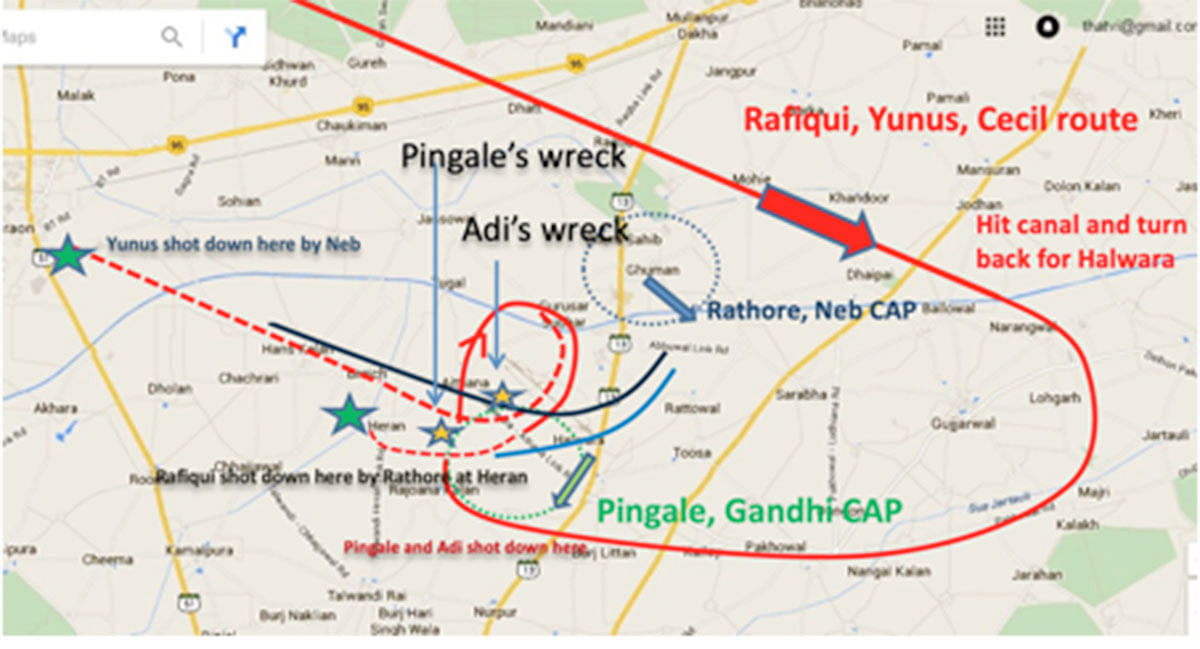
Fate seemed to be favouring the Pakistanis. They had arrived undetected over Halwara and had caught the IAF CAP, their would-be tormentors, at a time when the Hunters were taking off at low speeds. Having eliminated the proximate CAP threat, Rafiqui turned his attention towards Halwara airfield some distance away. It lay open and exposed, bristling with aircraft, vehicles and other potential targets for the high power Browning ammunition. ‘Let’s plaster the airfield boys,’ Rafiqui ordered his formation as each one of them eased into a much rehearsed shallow gun dive attack, unmindful of the threatening ack-ack fire from the Indian anti-aircraft gunners.
Halwara airfield stared at the bleak prospect of obliteration as Rafiqui’s aircraft began their heady attack run. The tip of PAF’s sword was slicing through IAF’s defences and at that moment, seemed indefatigably unstoppable.
Halwara airfield. 1803 hours IST
The last hope for Halwara on that perilous day was the daring pair of Rathore and Neb, who having heard the ejection calls of Pingale and Gandhi, were rocketing towards Halwara. Rathore knew that Neb and he were up against the cream of the PAF and were outnumbered as reported by the CAP controller. However, they had the home turf advantage.
Like hungry lions, they pounced on their prey.
Rathore made the first contact. “Neb, I am going for the bogey at right two o’clock low, you take the bugger at left eleven o’ clock low,” Rathore’s outburst on R/T was full of choked adrenalin rush and pervasive anger. Neb reported contact with his designated target and went to maximum throttle to close in. The scene was set for the IAF’s retaliation on the infamous PAF trio, hell bent on reducing the Halwara airfield to ashes.
Rafiqui’s No. 2, Flt Lt Yunus Hussain, spotted the Hunter pair bouncing them and ordered a defensive break for him.
Rafiqui turned hard towards Rathore’s Hunter, generating G’s galore in a desperate move to neutralise the threat. Rathore, however, was ready for this and zoomed up in the sky to cut his forward travel and tear-dropped back to get Rafiqui’s Sabre within the diamond reticles of his gyro gunsight. Rafiqui lost Rathore for a few vital seconds, which allowed Rathore to get behind Rafiqui and close in for a gun solution. At 600 yards, Rathore fired a short burst from his potent cannons. This burst caught Rafiqui on the left wing and his Sabre seemed to slow down rapidly in air. Rathore closed in further and fired his final 30 mm burst at 300 yards, mortally hitting Rafiqui’s Sabre. The Sabre banked sharply to the left and dived for the ground. Rathore followed the Sabre down to the deck level, where it hit the ground near Heren village, about six miles from Halwara. Rafiqui had been fatally hit and did not eject from his doomed Sabre. Probably the best PAF pilot of 1965 war, Rafiqui died over the grain fields of Punjab, doing his best for Pakistan.
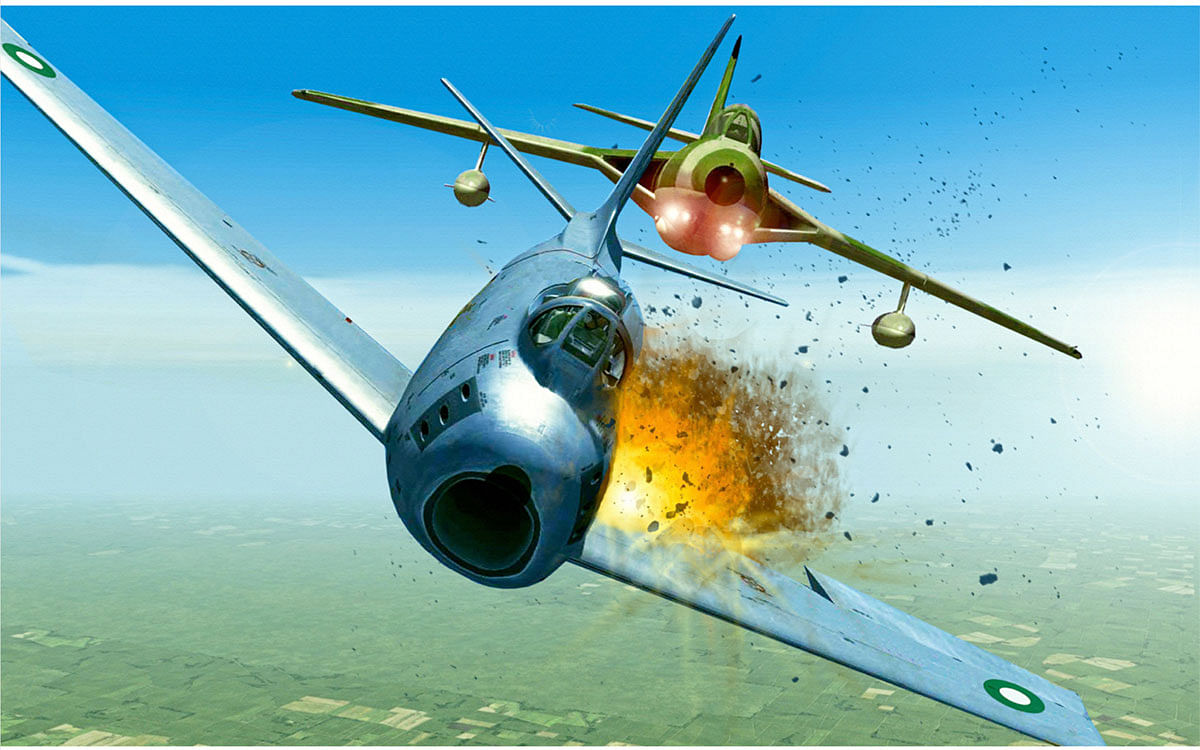
Meanwhile, Neb, the rookie Hunter pilot was earning his spurs at an astonishing rate as he battled it out with two PAF Sabres. As Neb dived towards Yunus Hussain controlled by Rathore, Cecil Choudhary, who was trailing Hussain by a km, shouted to warn Hussain about Neb cutting inside his turn and ordered a defensive break for him to turn hard inside Neb’s turn, so as to mush the Hunter. Hussain panicked and pitched up to zoom towards the safety of the sky in order to escape the Hunter. This helped Neb further catch up with Hussain’s Sabre. With his speed overtake, Neb pitched up to lead his nose ahead of the Sabre.
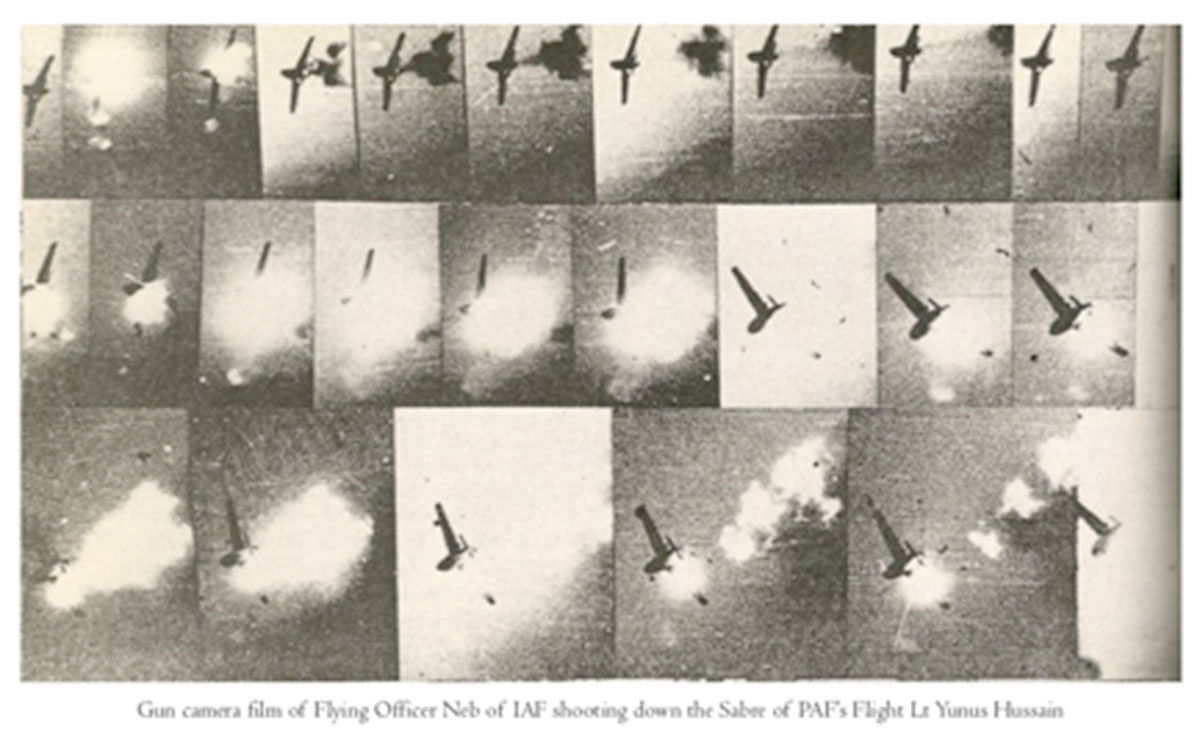
This allowed his gunsight control system to predict the path of his bullets while taking into account the Hunter’s momentum and the gravitational force. As his gyro gunsight settled down on Hussain’s Sabre, Neb, who had never fired the Adens on the Hunter before, depressed the firing button for the first time and saw the volley of tracers lead the high explosive shells all the way to the Sabre. The Sabre was hit and caught fire. Yunus Hussain did not survive this attack and went down with his Sabre in a trail of smoke. Cecil Choudhary frantically exited the combat and turned to escape towards Pakistan. After a hair-raising low-level flyback, he had just about landed back at Sargodha when his aircraft flamed out due to want of fuel on the taxiway.
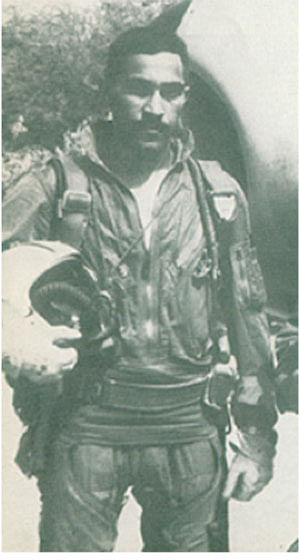
The tables had been turned on the Pakistanis over Halwara in a fierce counter-attack by the IAF. Rafiqui and his formation had penetrated into the IAF’s inner sanctum and had come within a hair’s breadth to causing mayhem at Halwara. However, the timely intervention of the young duo of Rathore and Neb had successfully blunted the tip of PAF’s sword.
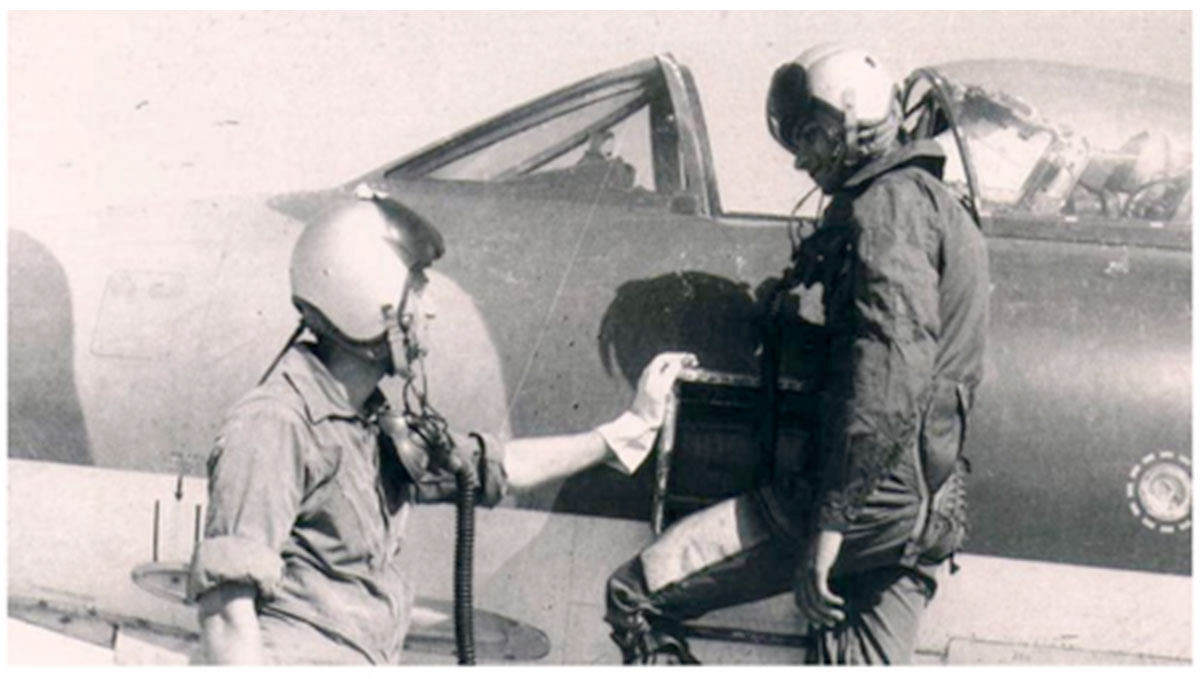
The Pakistanis launched paratroop raids over airfields at Pathankot, Adampur and Halwara in a last act of desperation to cripple the frontline IAF airfields on the night of 6-7 September. Sixty Special Service Group (SSG) commandos were dropped by three C-130 aircrafts each, about two miles away from their targets between 0200–0300 hours. The drops were successful, but since the plan was tactically unsound, the commandos ran into unforeseen difficulties and were effectively countered by Indian security agencies and civilians in a well-coordinated move. Most commandos were killed or captured by dawn. However, a small element managed to escape back to Pakistan over the next few days.
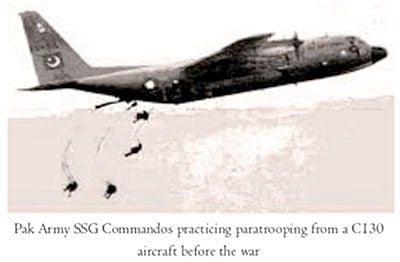
PAF was shaken with the loss of Sarfaraz Rafiqui, with 6 September as the Sham-e-Ghariban for most of his colleagues. He was awarded Pakistan’s second highest award of Hilal-e-Jurat. Rafiqui’s body had been thrown clear from the crash site near Halwara. The IAF acknowledged the dogged resolve of Rafiqui and Hussain to achieve their objectives. After collecting their personal effects found at the crash sites, both were buried with appropriate rituals. The remains of Rafiqui and Hussain’s Sabres are displayed at the IAF museum at Palam.
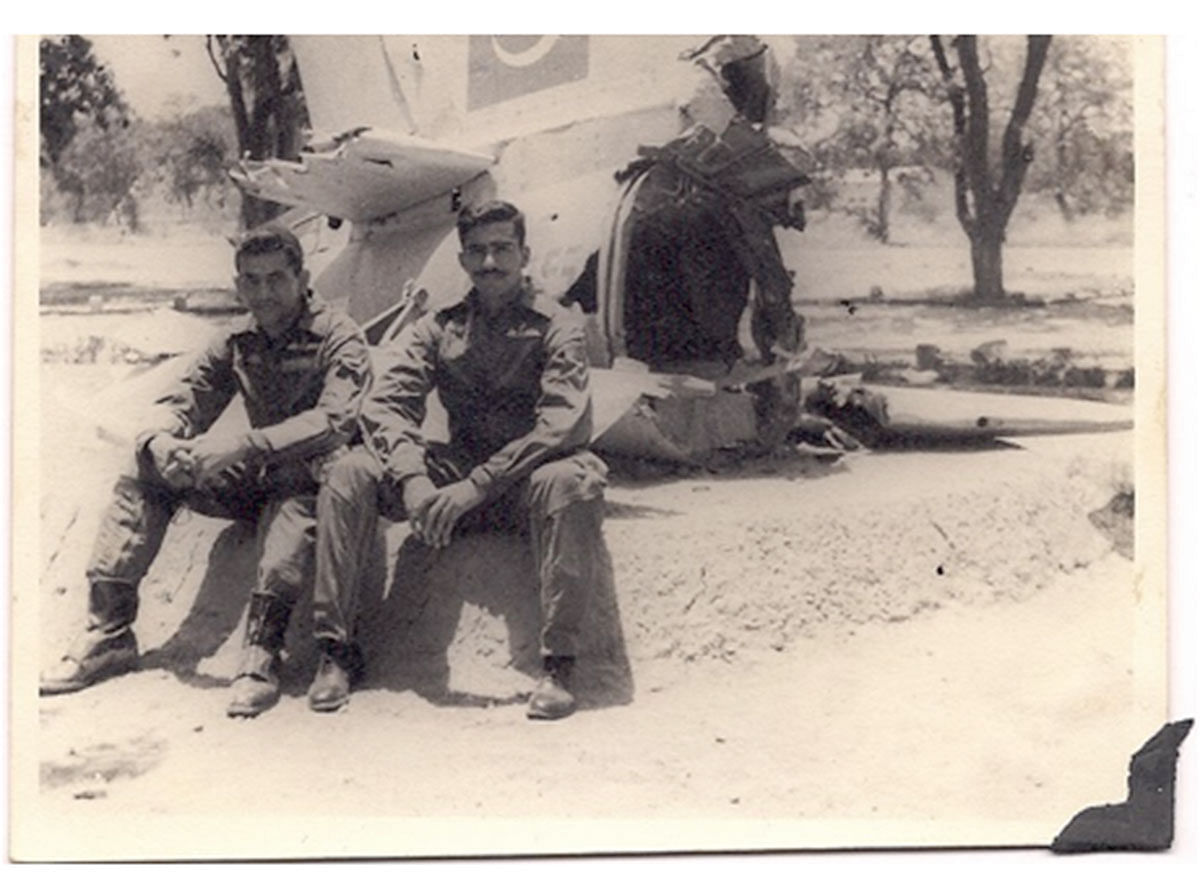
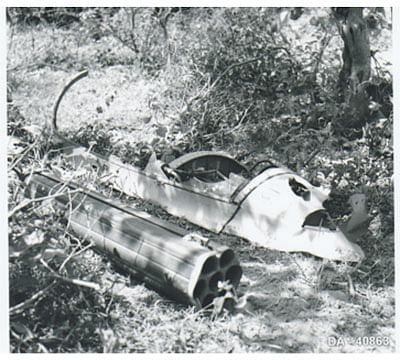
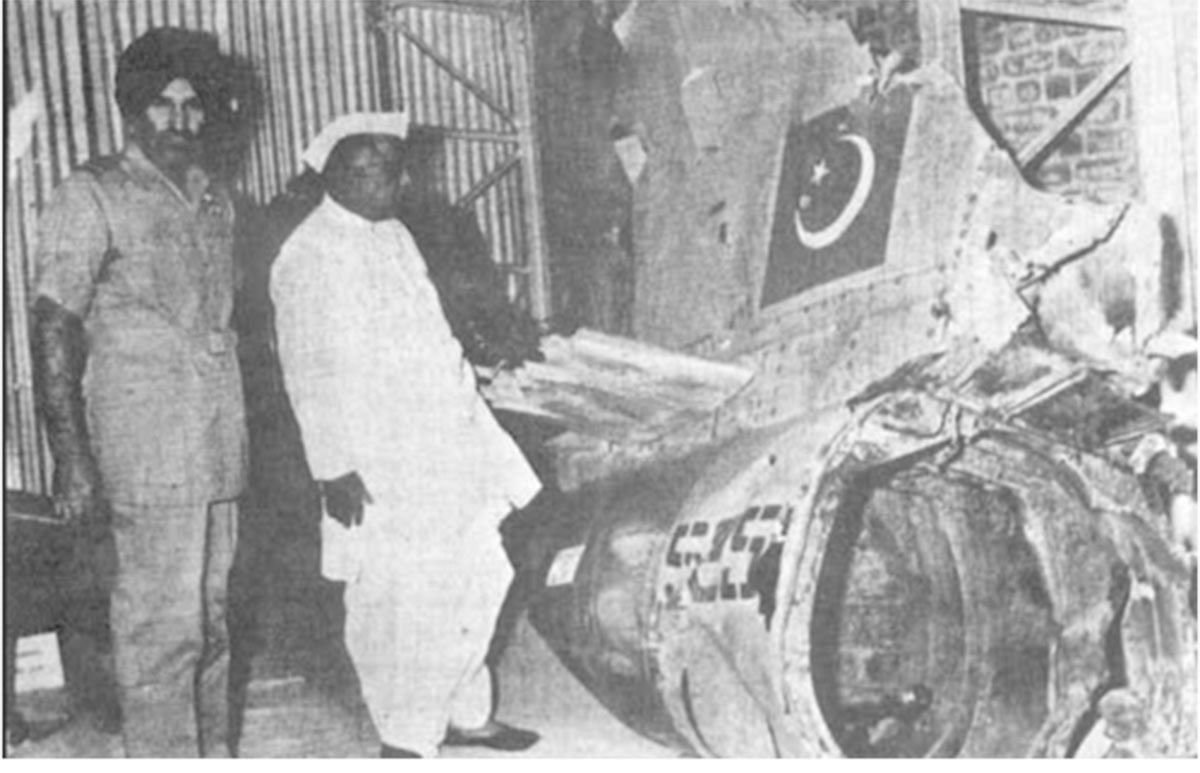
Rathore and Neb’s success came as a great morale booster at Halwara for the pilots of 7 and 27 Sqn and helped avoid damage to Halwara airbase. While Rawley had been lost in a freak accident, the PAF had shot down Pingale and Gandhi in a surprise attack. However, when confronted on equal terms by Rathore and Neb, the PAF pilots could not hold their own. More Sabre kills by the Hunter pilots were to follow in the coming days. For selfless gallantry in air and shooting down enemy aircraft, Rathore, Gandhi and Neb, were each awarded a well-deserved Vir Chakra.
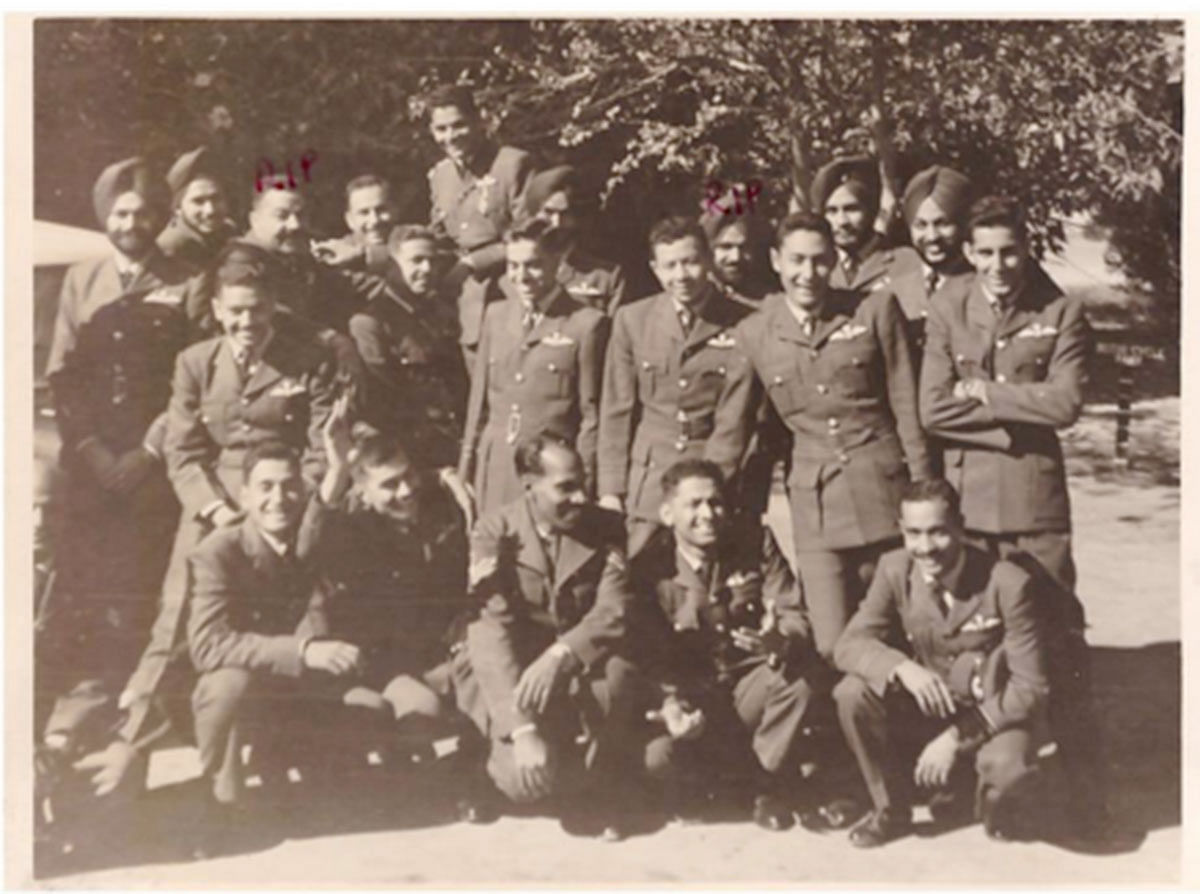
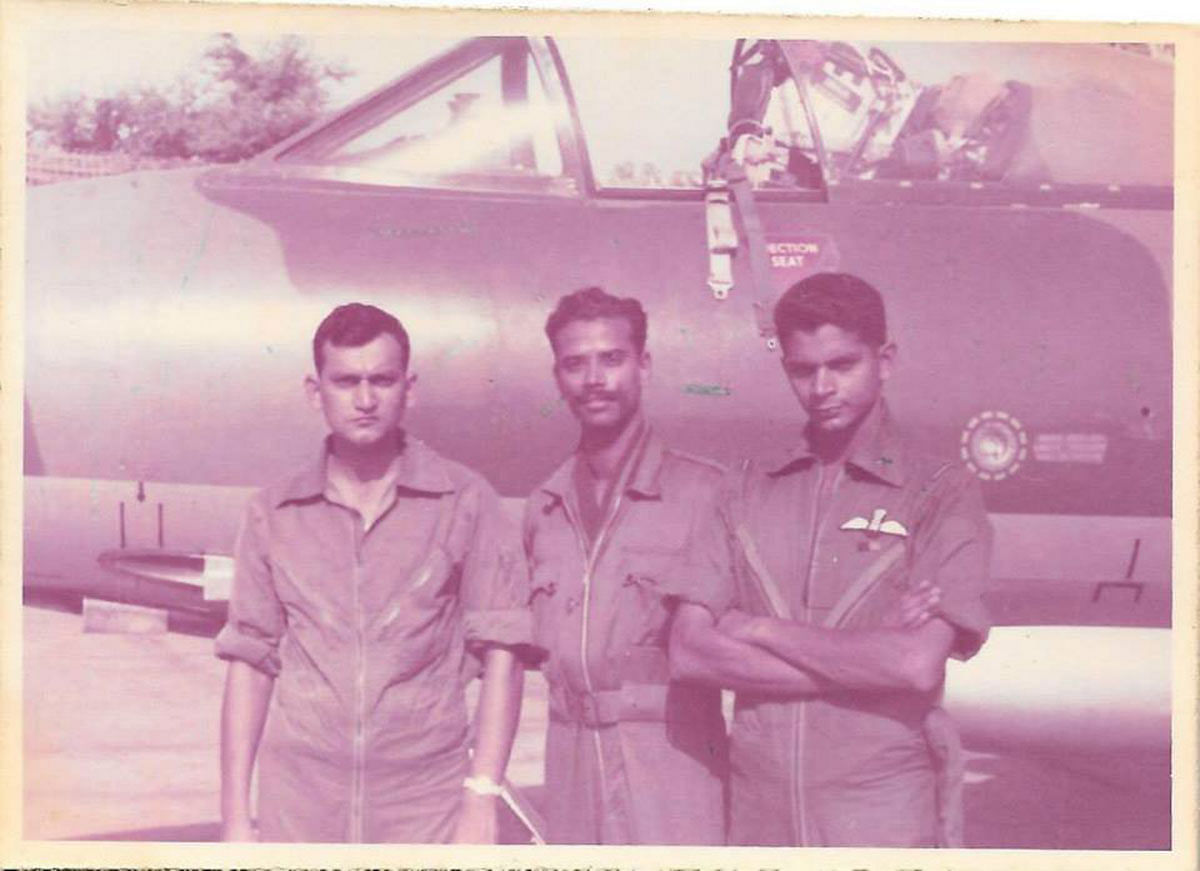
While the PAF’s Pathankot raid was a success, given the odds in its favour, the failure of Adampur and Halwara air strikes did not go well with the PAF. Raids on the Amritsar, Porbandar and Ferozpur radars, as well Jamnagar airfield, were also a failure. After 6 September, the PAF stopped all daylight bombing missions into India.
On its part, the IAF learned a major operational lesson after the Pathankot losses and bolstered its air defence in the required manner. CAS Arjan Singh decided to give the PAF a befitting reply by sanctioning all out strikes against PAF bases on 7 September.
After 6 September, the IAF maintained a highly effective operational tempo to rein in an aggressive PAF with bold and overwhelming missions, effectively seizing initiative for the remaining duration of the war.
Pathania and Neb got another Sabre kill each in the 1971 war. Celil Chaudhary retired as a Group Captain from the PAF, denied further promotion on politico-religious grounds, him being from the Christian minority in Pakistan.
Defence Day in Pakistan
6 September is celebrated as ‘Youm-e-Difā’ , or the Defence Day, in Pakistan to commemorate the sacrifices made by Pakistani soldiers in defending its borders. It marks the day in 1965 when Indian troops crossed the international border to launch an attack on Pakistani Punjab, in a riposte to Pakistan’s Operation Grand Slam targeting Jammu. The Pakistani narrative holds that it was an unprovoked surprise attack by India, which was repulsed by the PA despite its smaller size and fewer armaments. The narrative has been criticised by International and Pakistani commentators as representing false history.
Also read: 8 pieces of clinching evidence that show how IAF’s Abhinandan shot down a Pakistani F-16
*The author acknowledges the support of Mr. Jagan Pillarisetti towards this article.
The author is a former fighter pilot with extensive experience on the Mirage 2000 and MiG 21 aircraft of the IAF. He has seen combat in the 1999 India Pakistan Kargil conflict. He writes on military subjects and his article on the Air War in Syria, won the best military aviation submission at the 2017 Paris Airshow.


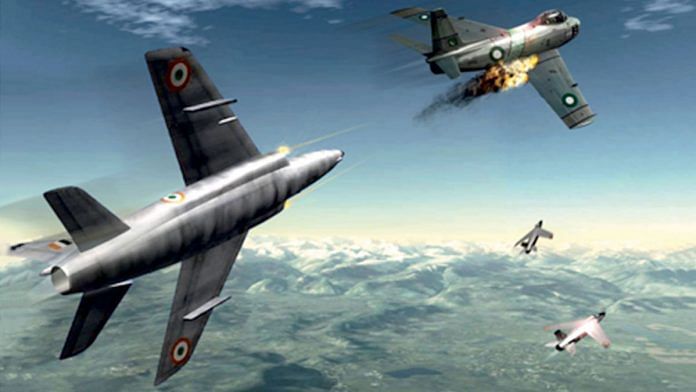

‘Superior’ sabers ? Are you a joke ? IAF had hunters, gnats and mig 21s.. you must be a moron to call sabers superior
There is no guncamera footag or physical evidence of any kind that any of the PAF” Sabrejet being shot down in the aircombat by the IAF jets EXCEPT for may be one. And IAF states that their fighters weren’t equipped with guncamera when most of IAF jets were new and much modern faster than the old Korean war F-86 Sabrejets. I’m sorry but showing what happened for real is not enough by drawing paintings , anyone can do that. To claim your victory you need a proof something to go by. Lies don’t change the history. Pakistan won 1965 war in the air , grond and the sea.
Your narrative only happens in PAK school books and false propaganda right??
The article completely missed the score of Fl. Lt. Yunous Hassan and Fl. Lt. Cecil Chuaudry during Halwara Raid. Both scored each Gnat.
PAF is much more modernaized then it was before. Just see how PAF killed a Mig-21 and one SU-30. And in return, INDIA killed its own helicopter. Shame on IAF for having such a big budget but still a below-par force.
Shame Indians for killing innocents in Kashmir. Pakistan will take revenge just like 27th Feb. Just wait a bit more and take off your curfew and then see what happens
Stop being a crybaby don’t forget Bangladesh exists till date your coward officers refused to accept their dead ones don’t worry Balochistan will be liberated soon
Oh miss, that mig 21 shot down a modern F-16, no Su-30 was shot down. The helicopter was a miss fire. I know it’s too hard to swallow, but you guys lose everytime. Better fight for a democratic government and replace the army making the government a puppet. Then there will be peace for all of us
What a beautiful narrative, my hair was standing on end reading through this.
Congratulations Print for publishing this excellent chronology.
Great read! Detailed like a movie.
Very interesting to note the comments of pakis … but what more can be expected of the citizens of a country that exports DONKEYS to earn FOREX.
True story……….Rafiqui Sabre guns had jammed but rather than returning back he gave cover to his other two colleagues in the epic air battle …Sarfraz Rafiqui was given Hilal i Jurat for showing this uncommon valor !!!
The nation which has history of being ruled by dictators and fanatics calling the duely elected government as Hitler & Nazi…
Surgical strikes… 0 bodies found.. By the way it was in Kashmir on IOK… . 26th feb 350 JM terrorists killed… 0 bodies found… Pakistan shot down 2 planes showed you a captured pilot. Everone should talk about facts. Confused government of yours still planning how to show their military is good.
I agree the indian military has more fire power but trust me Pakistan is not a country to mess with. The whole country’s population is military. India can never take over. Happy Defense to you all. Long live Pakistan
Rana is innocent..its not his fault. Pakistan narratives and teaching, all includes telling that always pakistan was attacked by India and india lost all the wars. No problem my freind, if u want to leave in ur own, self- created illusions..better u be there. Actual facts and wisdom may harm ur emotional feelings that u mayn’t be able to digest and ur health can be harmed. I wish a gud health and well being of urs.
Dear Rana, I have read all about the story of MM Alam shooting down five howler hunters in less than one minute. It looks as if Indian fighters were not flying, rather they were arranged in a neat row on table before the super ma’am Alam to just bump off…
Get a life man…
Very well written article supported by facts.
I wish to read more articles sir like this highlighting the sacrifice of our national heros ……May their soul rest in peace
Here we can see Indian fools telling abhinandan shot down PAF F16 but Washington defense team counted all our jets found nothing missing. Hats off for Vir Chakra to abhinandan who received after having fantastic tea ?. If you just Google don’t run for Indian biased media there search world’s record to shot down fighter jets in war there you will find MM Alam who shot down 6 IAF jets within minutes. #HitlerModi and his RSS Nazi party want Hindustan for Hindus only and rest in peace democracy ? ?
This could make a great movie.Wonder why nobody took this up.
Sameer Joshi thank you so much for those sepia tinted memories!
One of the best account of a battle I ever read!
Relived the moments.
This time it will be Doodhpathi as an award for shooting down Pakistani F-16 & loosing another Bison.
Deja Vu!
Absolutely hair raising thrilling account of the events that unfolded in September 1965!
I was a 6 year old lad whose father was posted at AF STN HALWARA & was witness to the bombardment and that memory is still very fresh as is the December 1971 stay at AF STN JAMNAGAR where again I had a opportunity to see a couple of Dog fights!
IAF came out TOPS in both the battle fields and richly deserve all the accolades.
Nice read about Halwara strike.
Sarfraz’s guns got jammed as his Saber underwent maintenance just before this attack
But still its a good read and very close to the actual events.
I wish IAF release the details of actual events of 27th feb as well i.e the amount of panic which was created by PAF and shooting down of SU-30.
You Pakis live in a very delusional world. You are a failed state and a beggar. The whole knows you for only one reason: Terrorism. Maybe also for begging?.
No one can lie more than the Endians.
You guys have really got a brain in your head or its all dung?
PAF’s strike was deep and a complete success and as a resultant, you shot down your own heli. Come on and wake up. Come out of the lies of Modi Nazi.
You can’t even dare to face JF-17 let alone F-16.
Poor Abhinandan was sent to receive a whooping SD-10 on his back.
Ask your IAF that where were your SU-30s on that day and why did they send a mig -21 to receive the wreath of PAF.
why your HITTLER MODI had to say that Rafale would have been able to save the IAF on 27th Feb.
Believe me, if SU-30s or other sophisticated state of the art systems couldn’t save you on that, Rafales will neither. It’s all about courage which Endians don’t have.
There was no shooting down of Su 30. Whereas the Abhi had shot your F16. How much your country will lie.
It’s always a surprise to see .when aPaki says that they have hit a Su30……for truth sakes plz check Su 30 performance in red flag exercise…..u will realise. Wat Su 30 is…..its Nick named as thrust vectoring beast….for a reason……
Bali, why you guys keep referring to an old exercise again and again. Technology has taken manifolds since then.
Where the hell your freaking Tejas were. Pakistan used its JF-17 as a frontline fighter and used to kill a mig-21 as well.
You guys are keep on buying one after another weapon system but how did you buy courage? Pakistan still maintains first shooting capabilities. Come out of F-16 dream. Whole world is laughting on you.
And please, stop killing innocents in Kashmir. Withdarw your 900k troops from there and use them to build toiltets for intidan public.